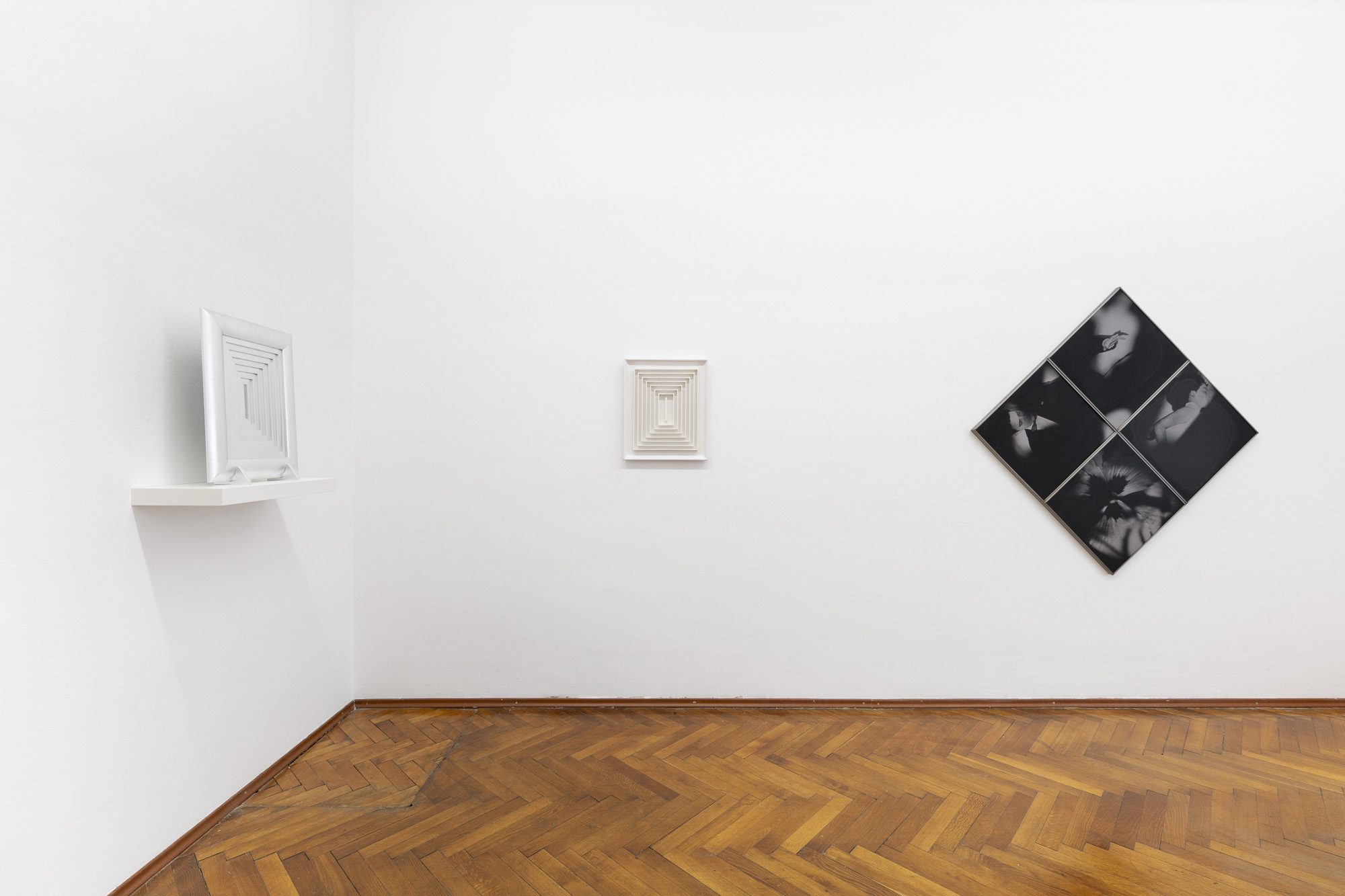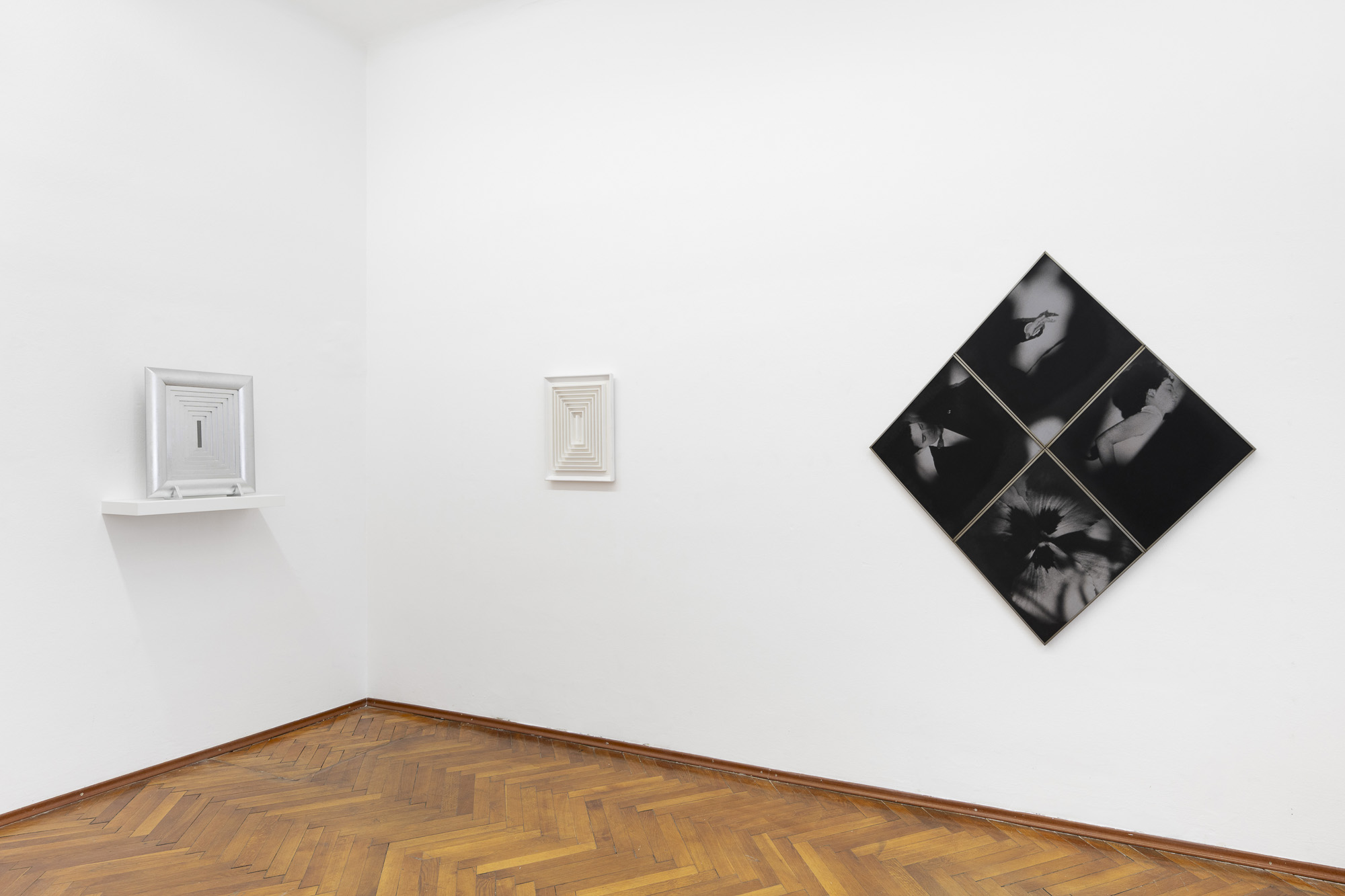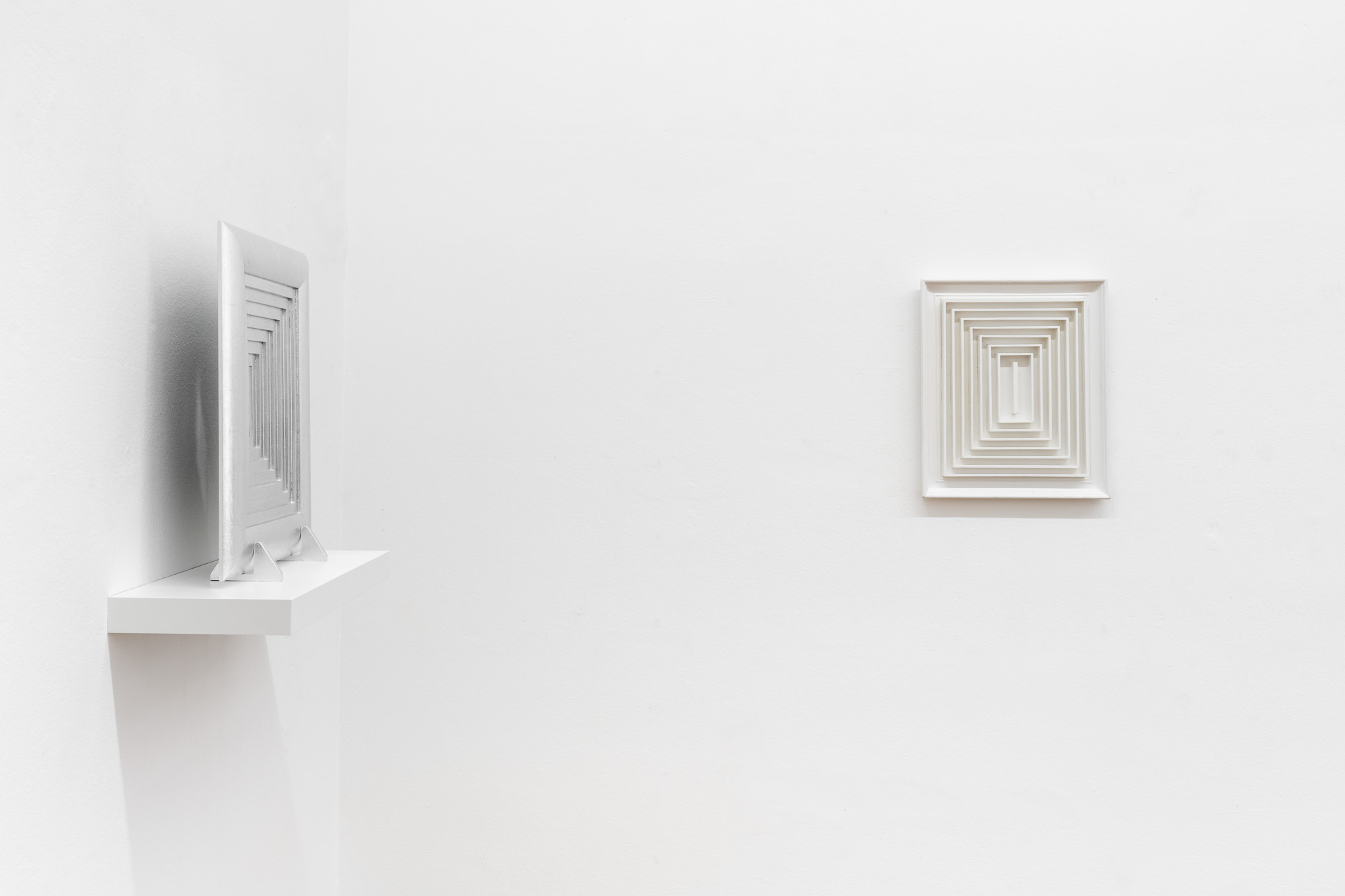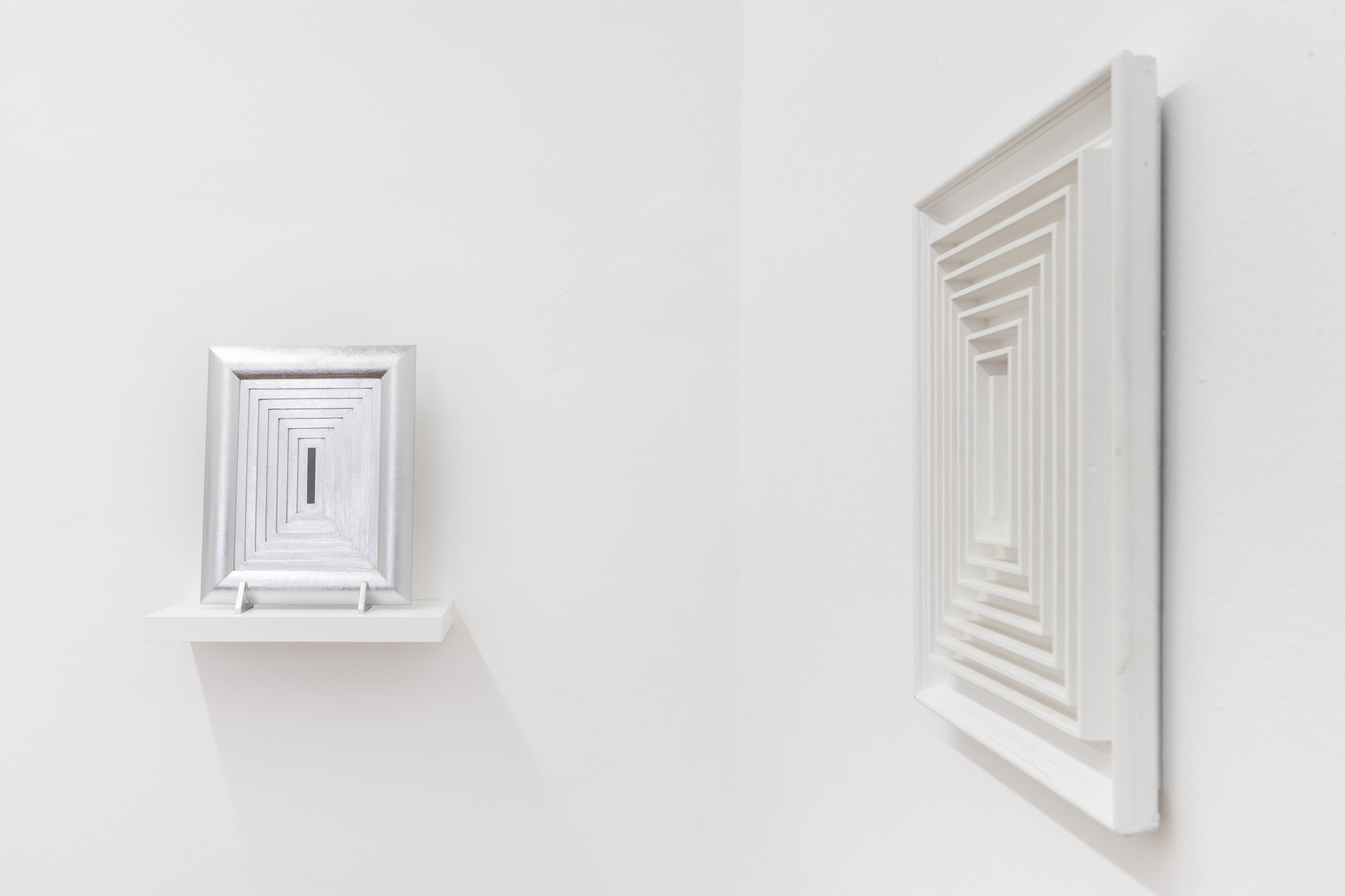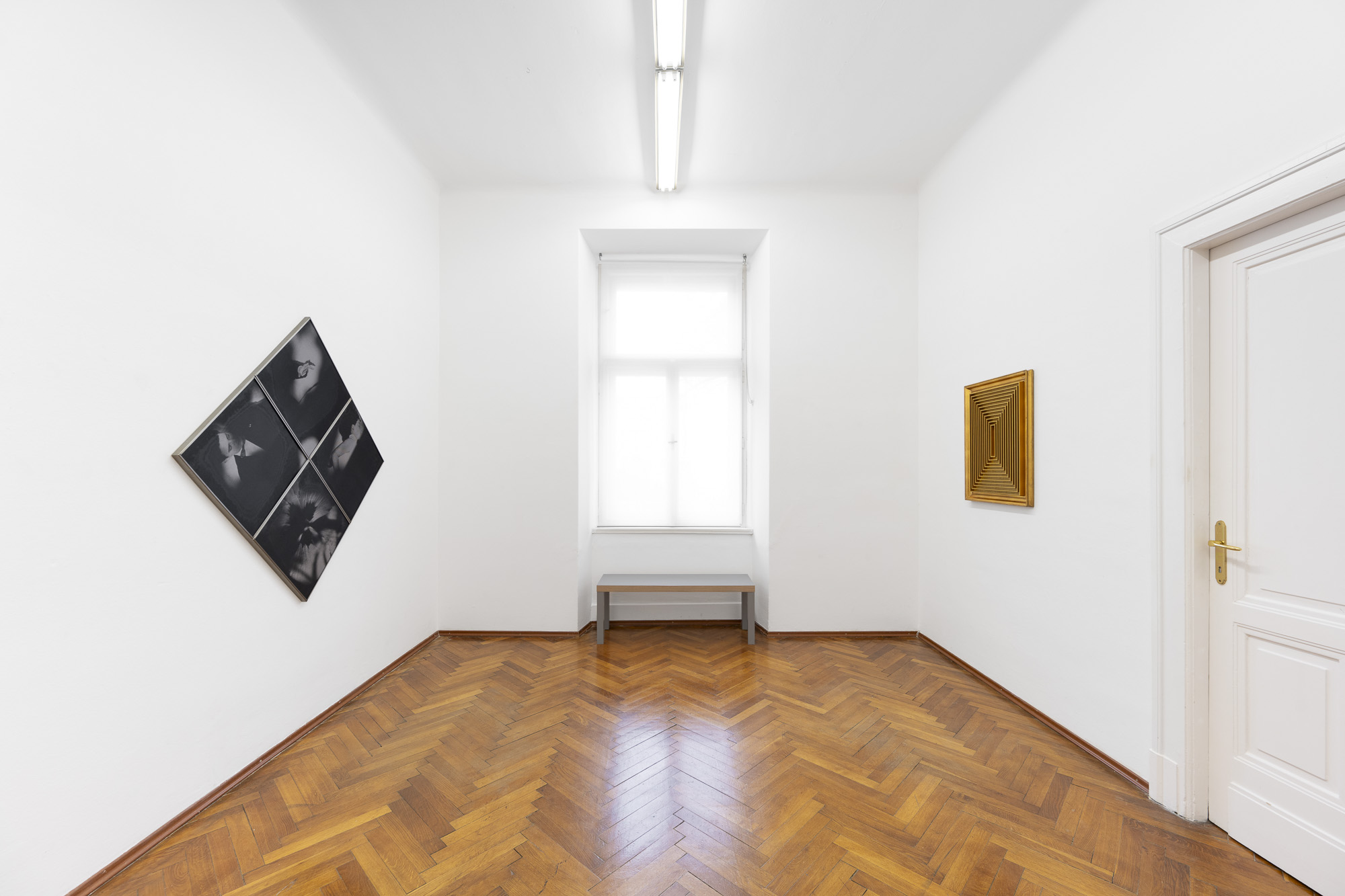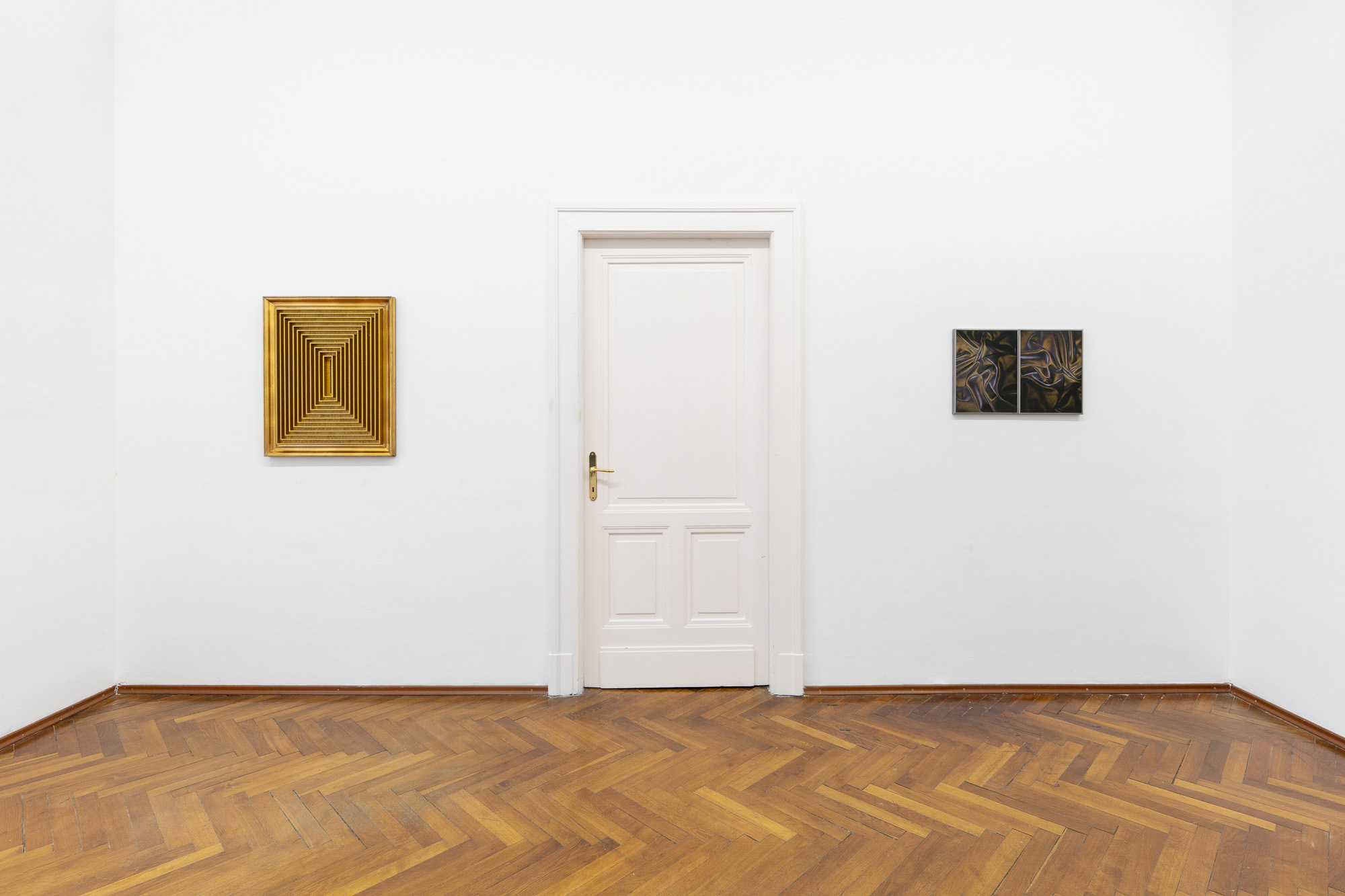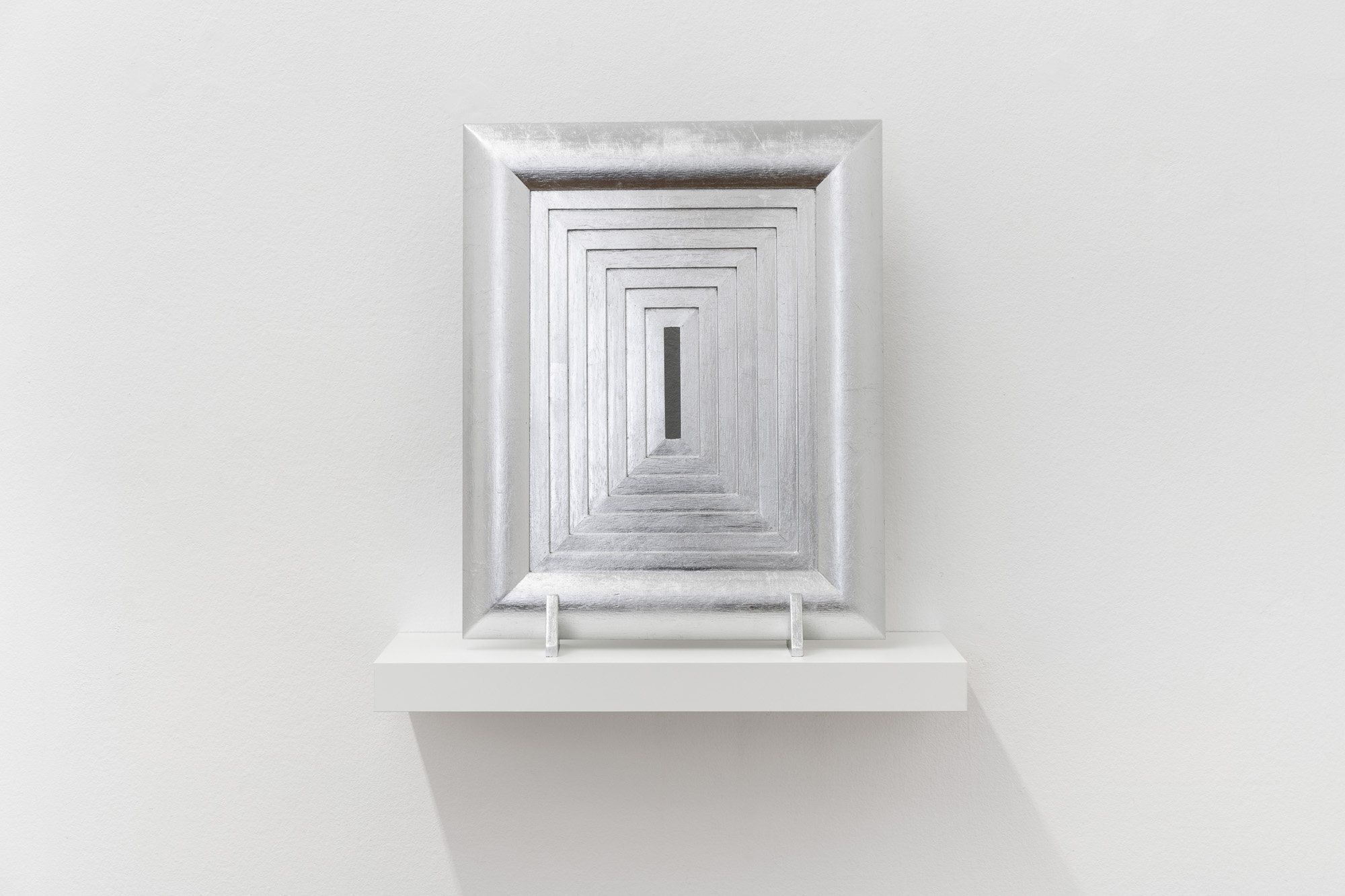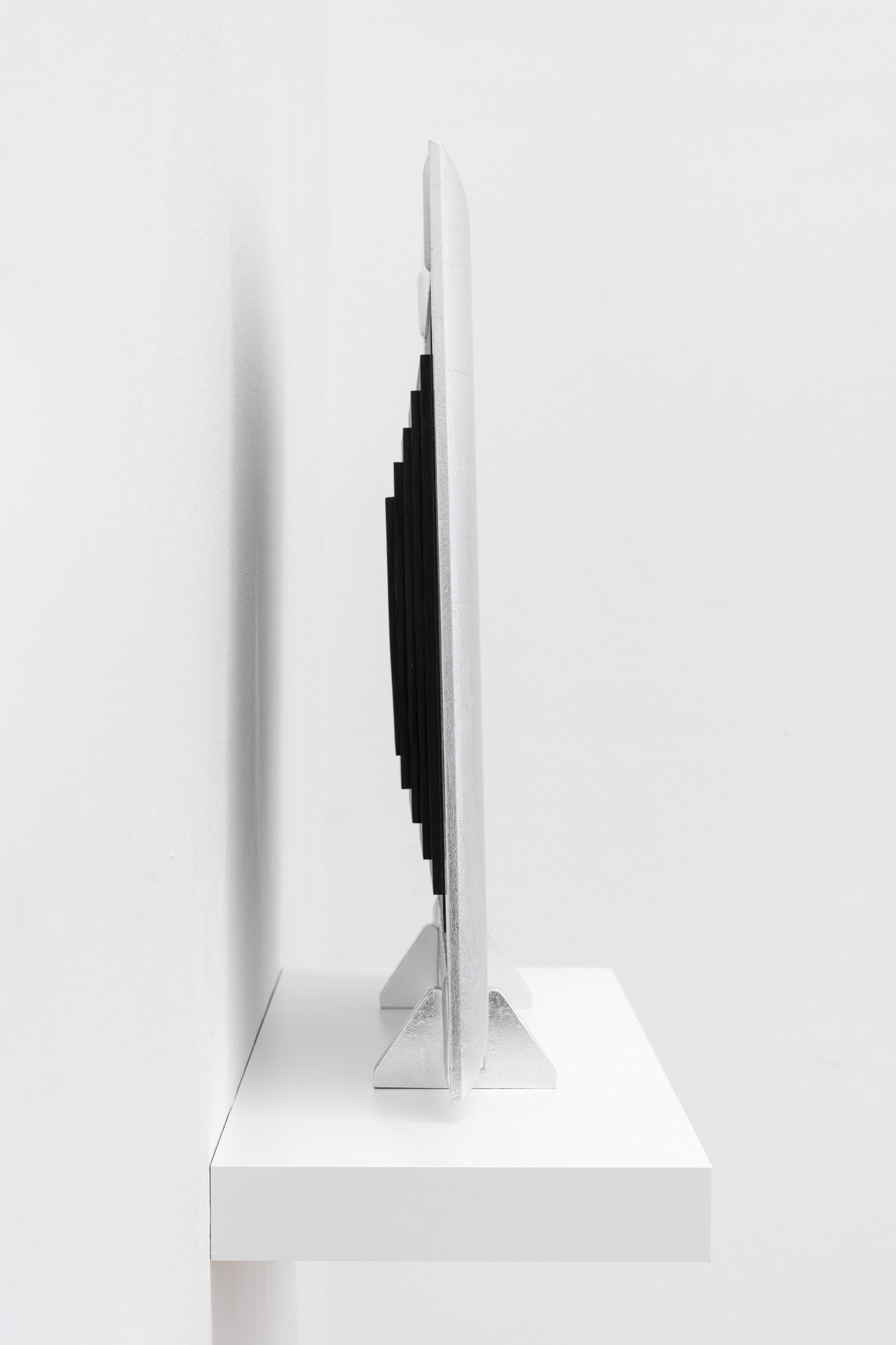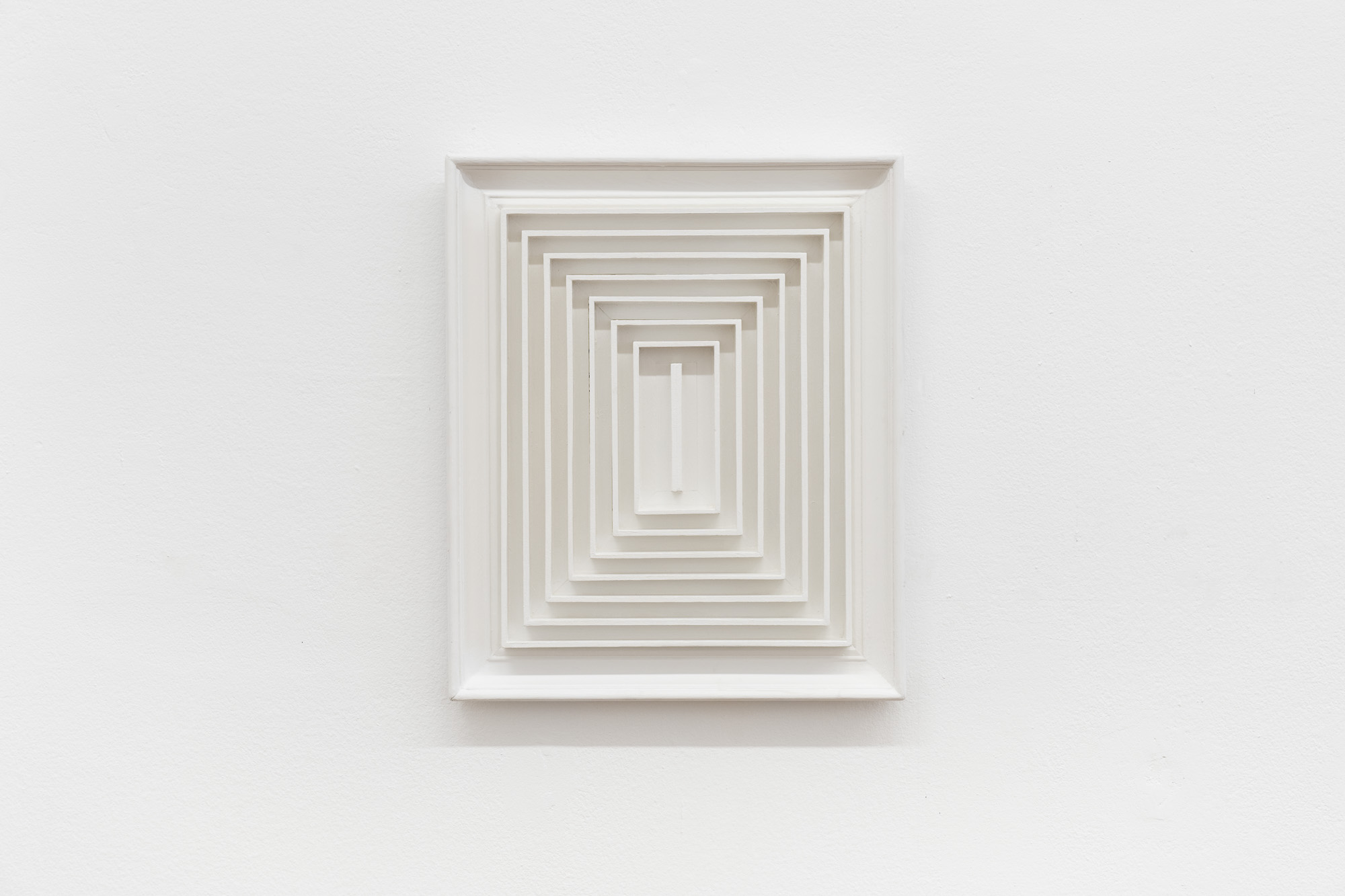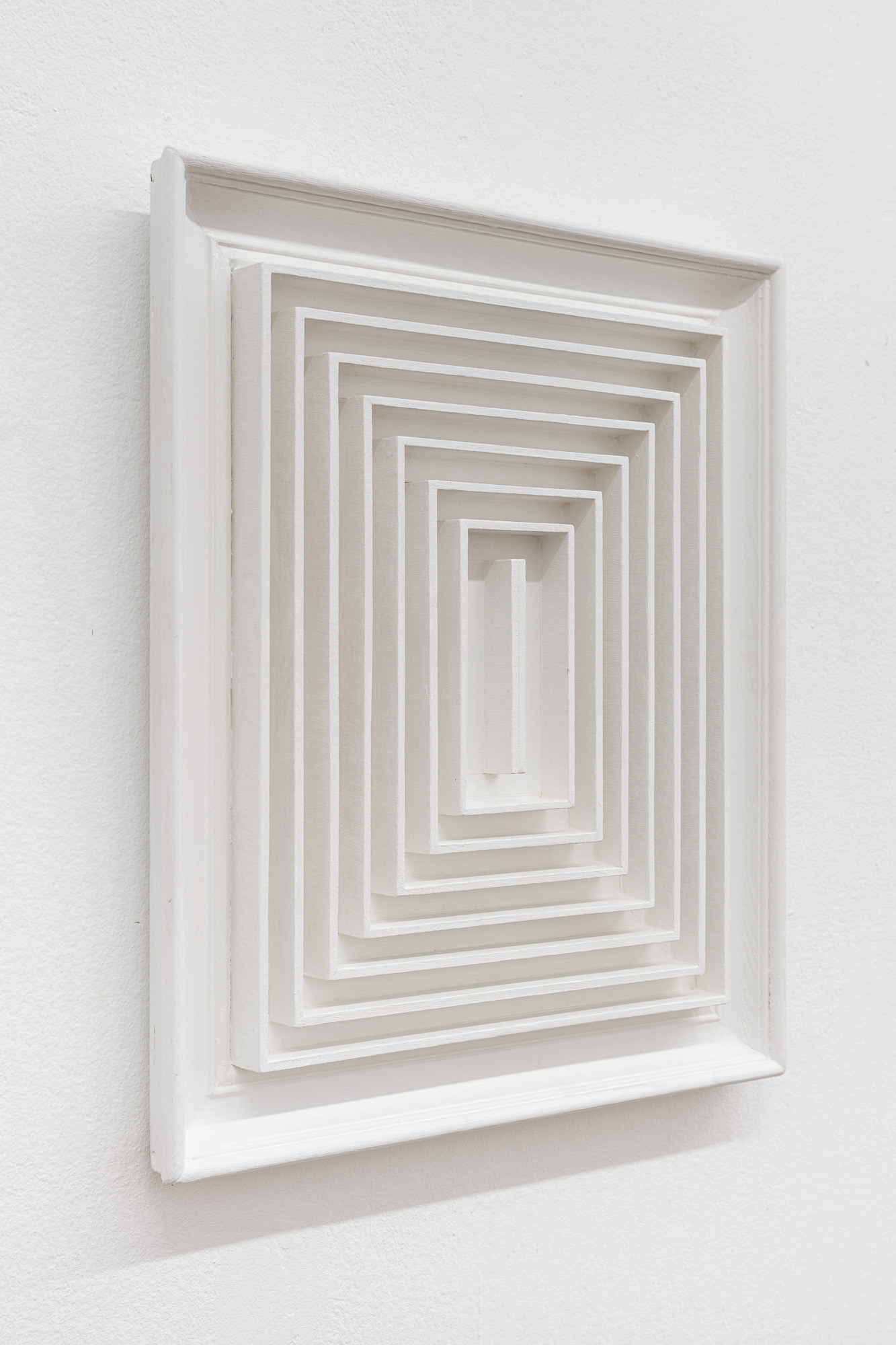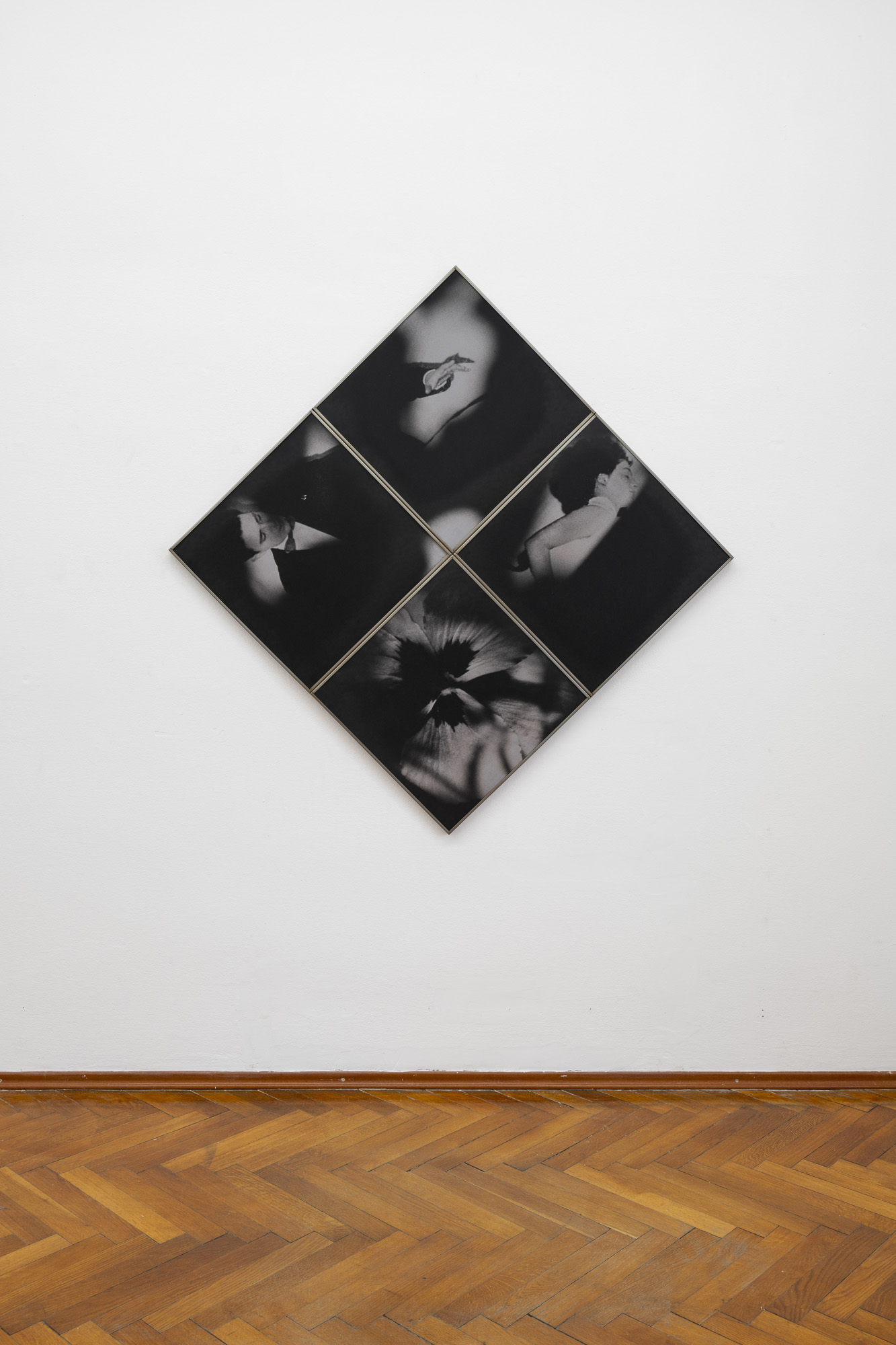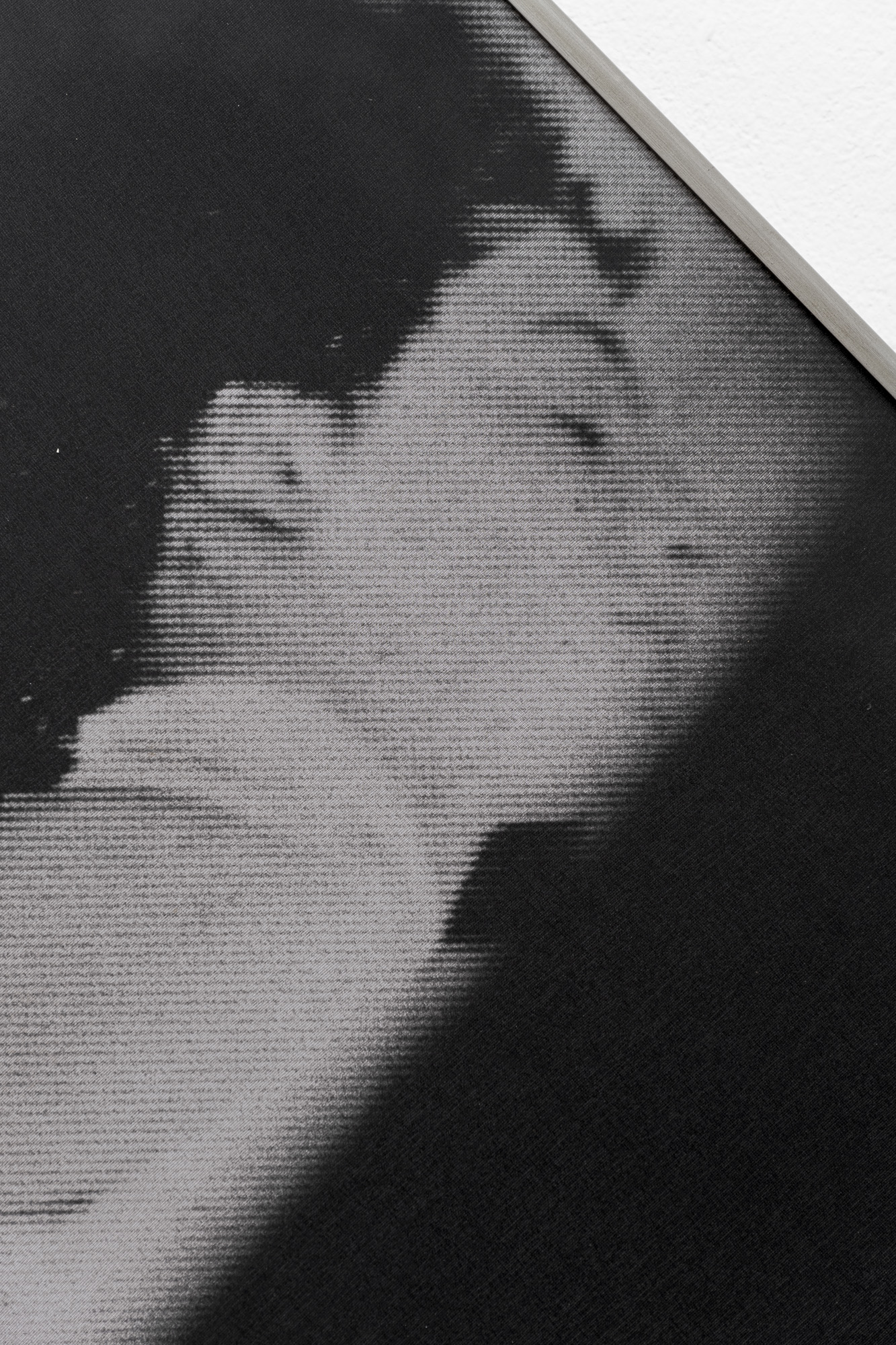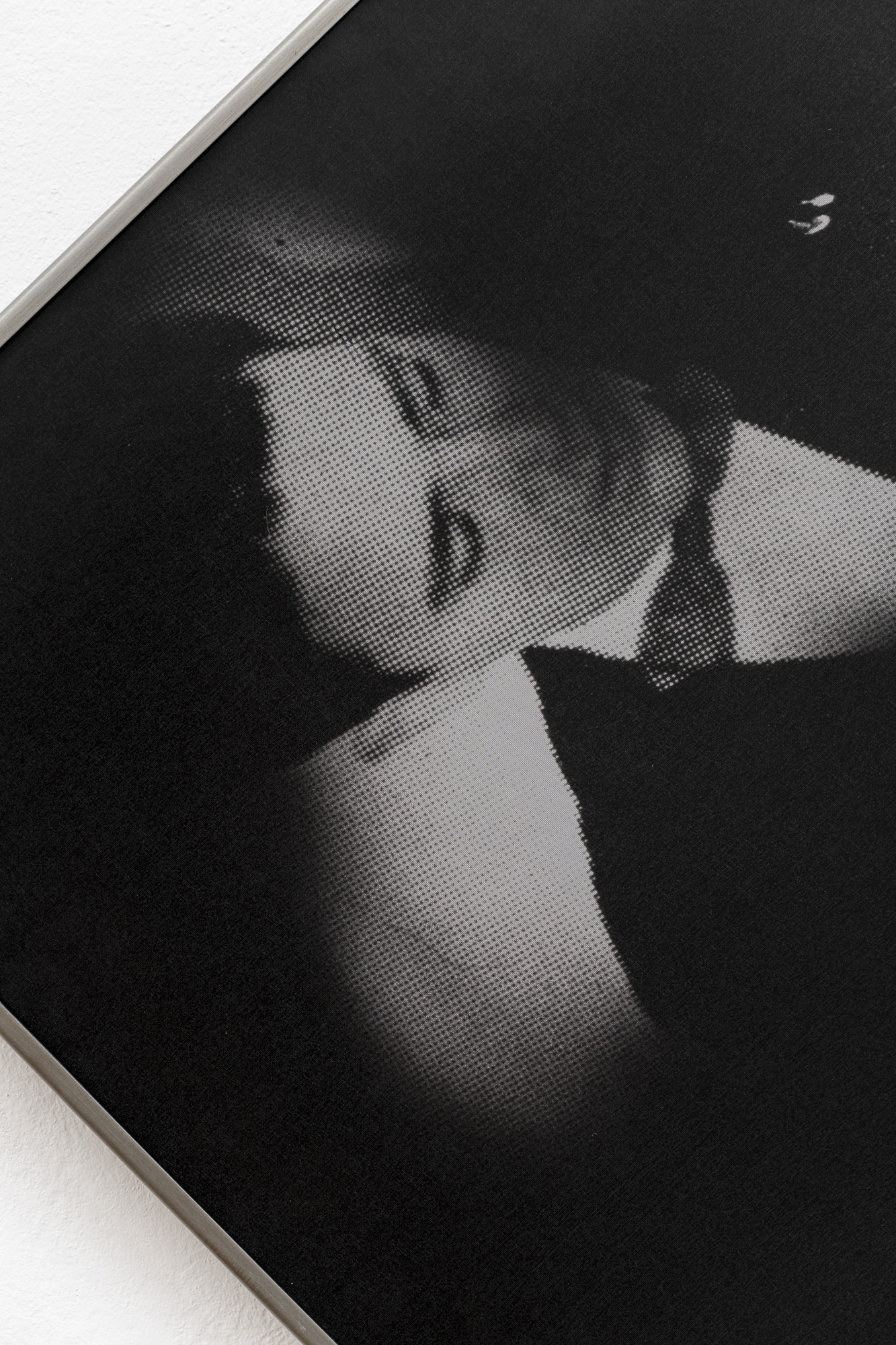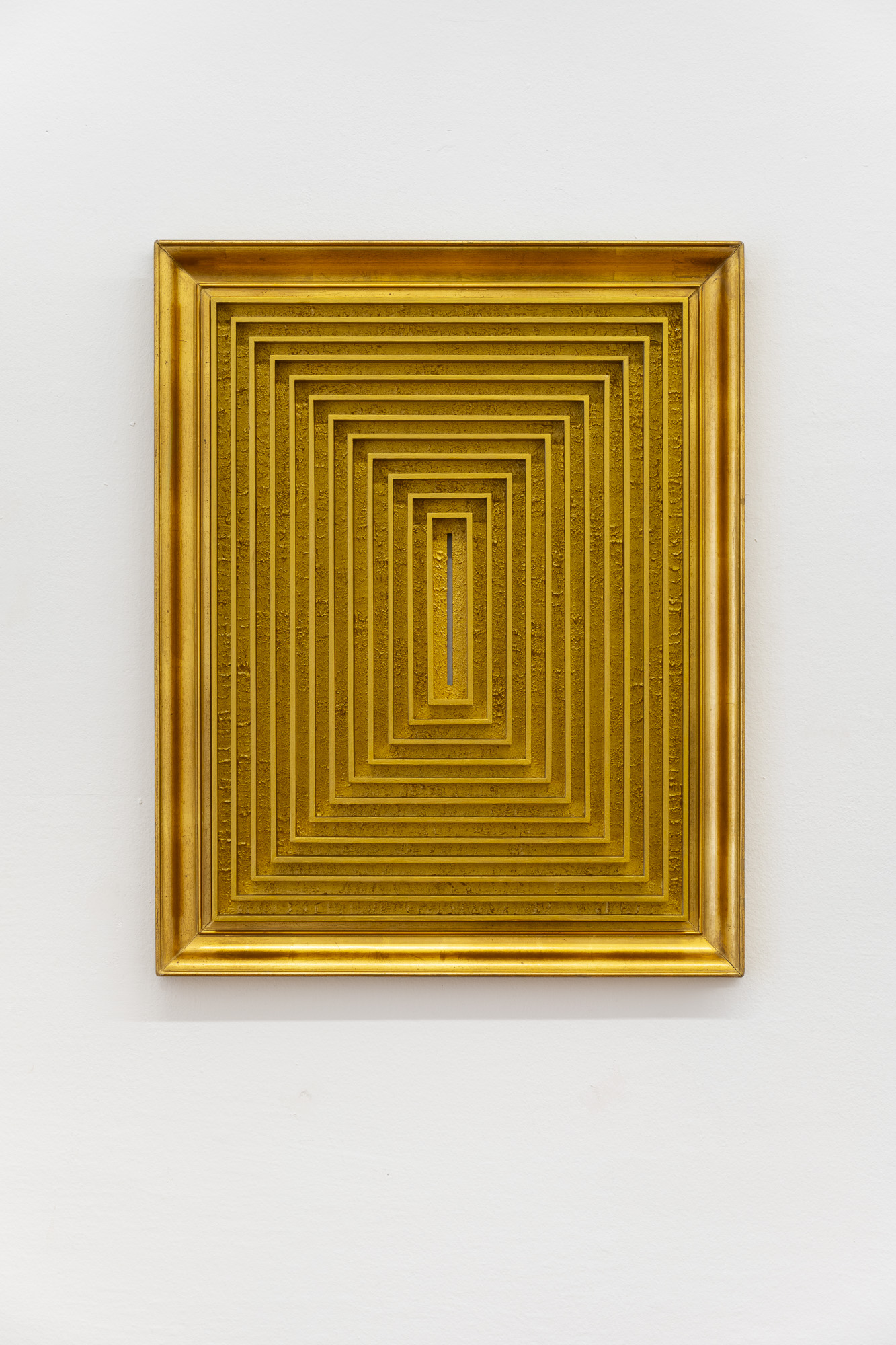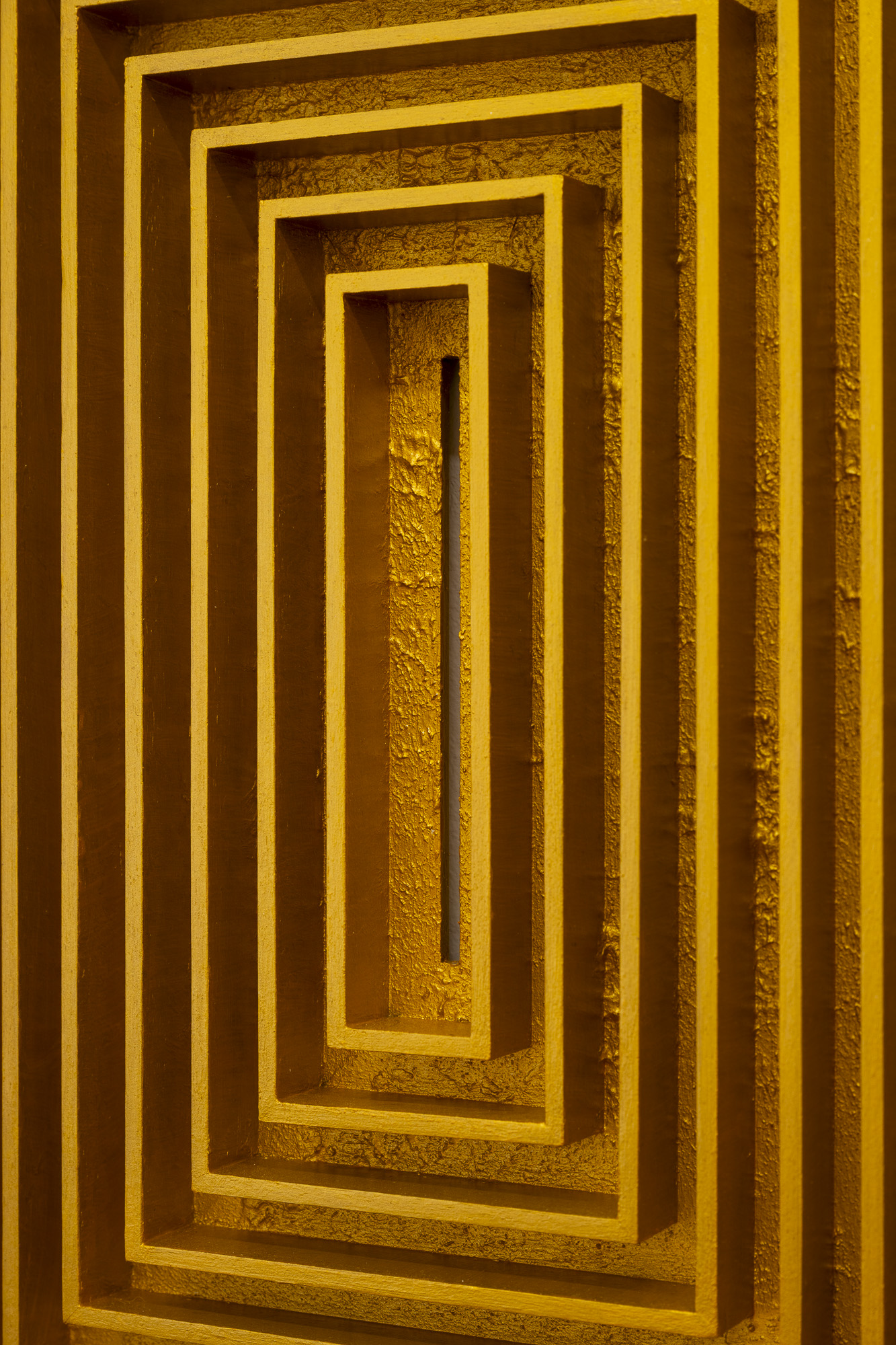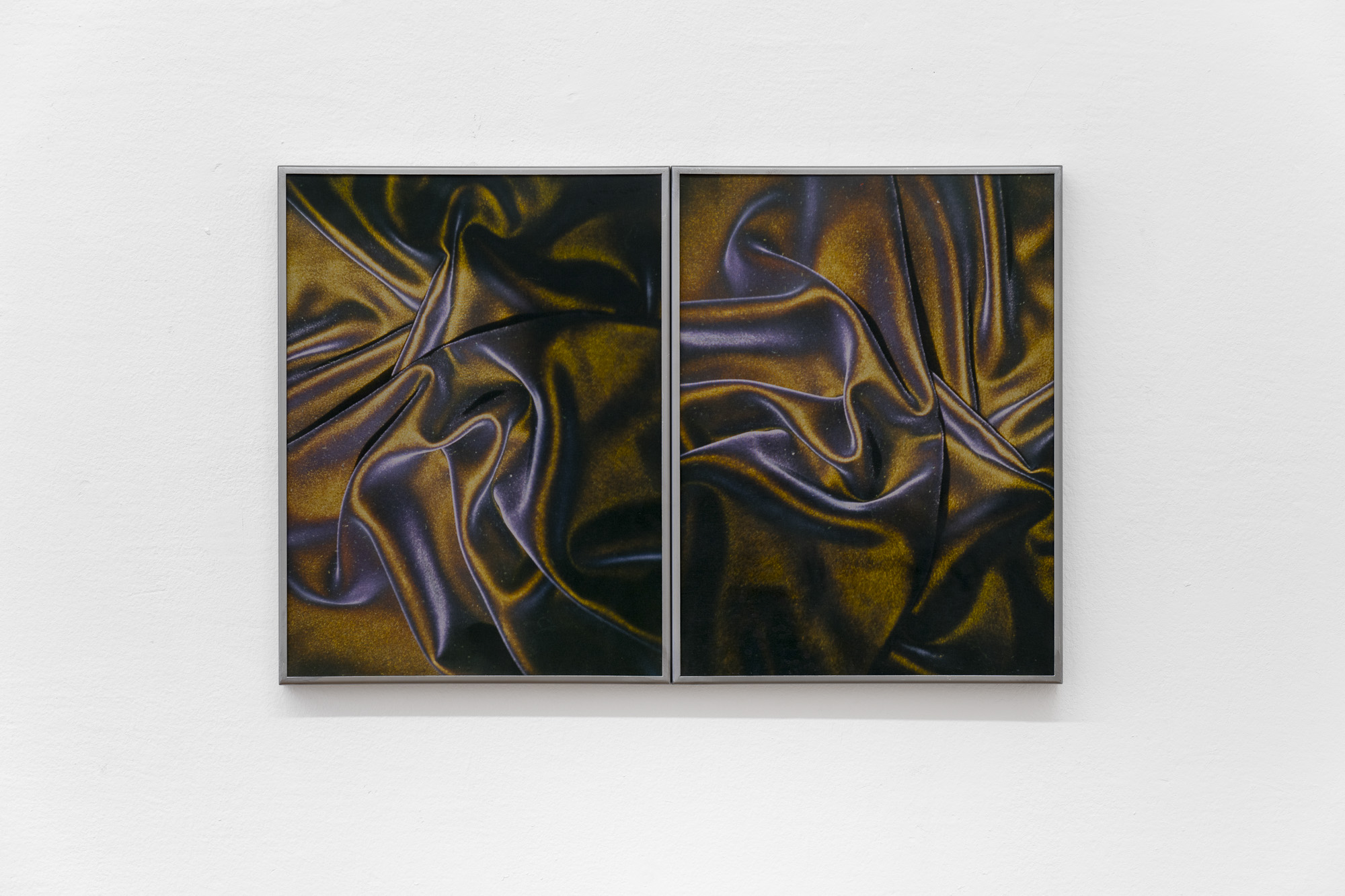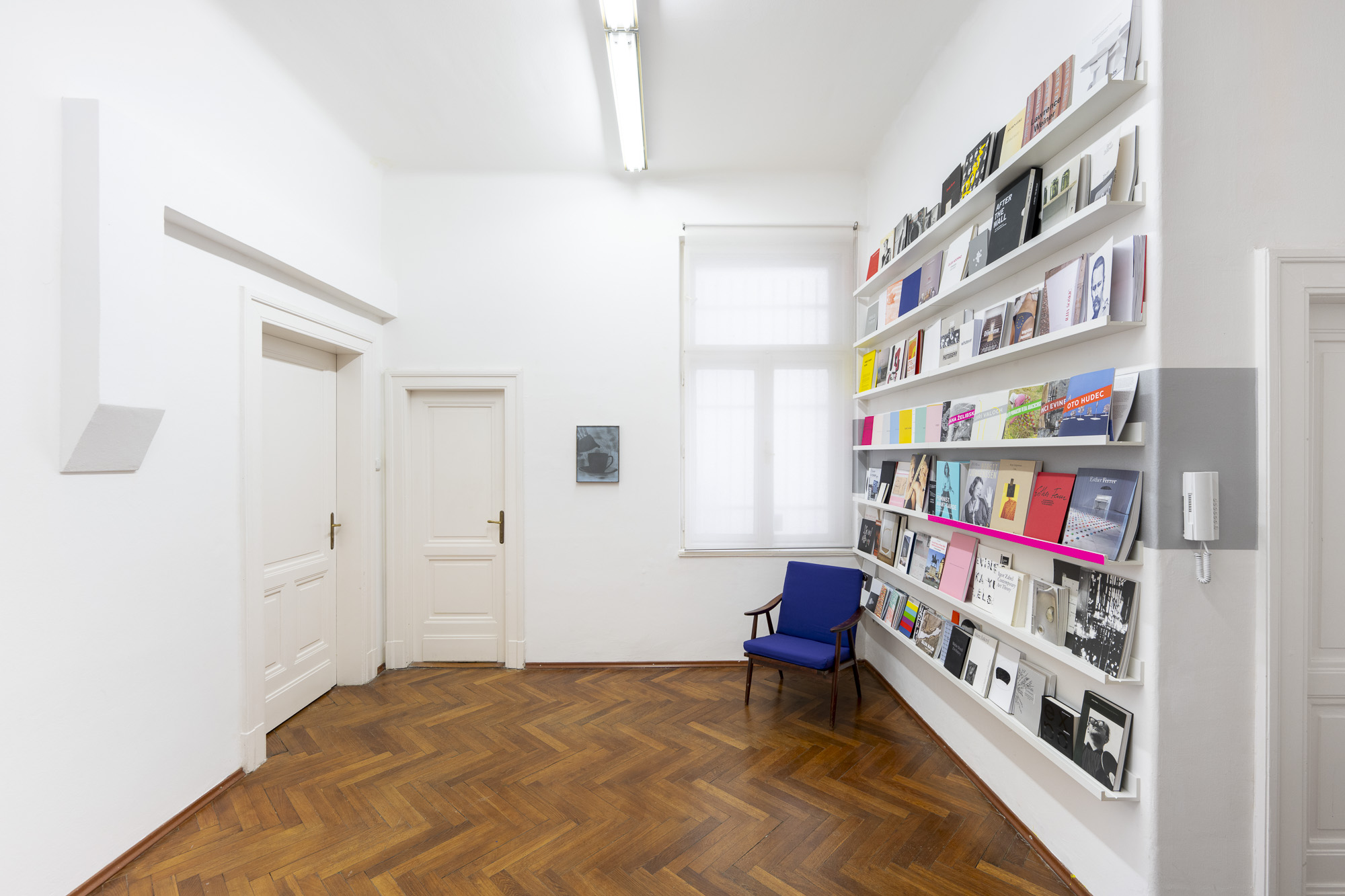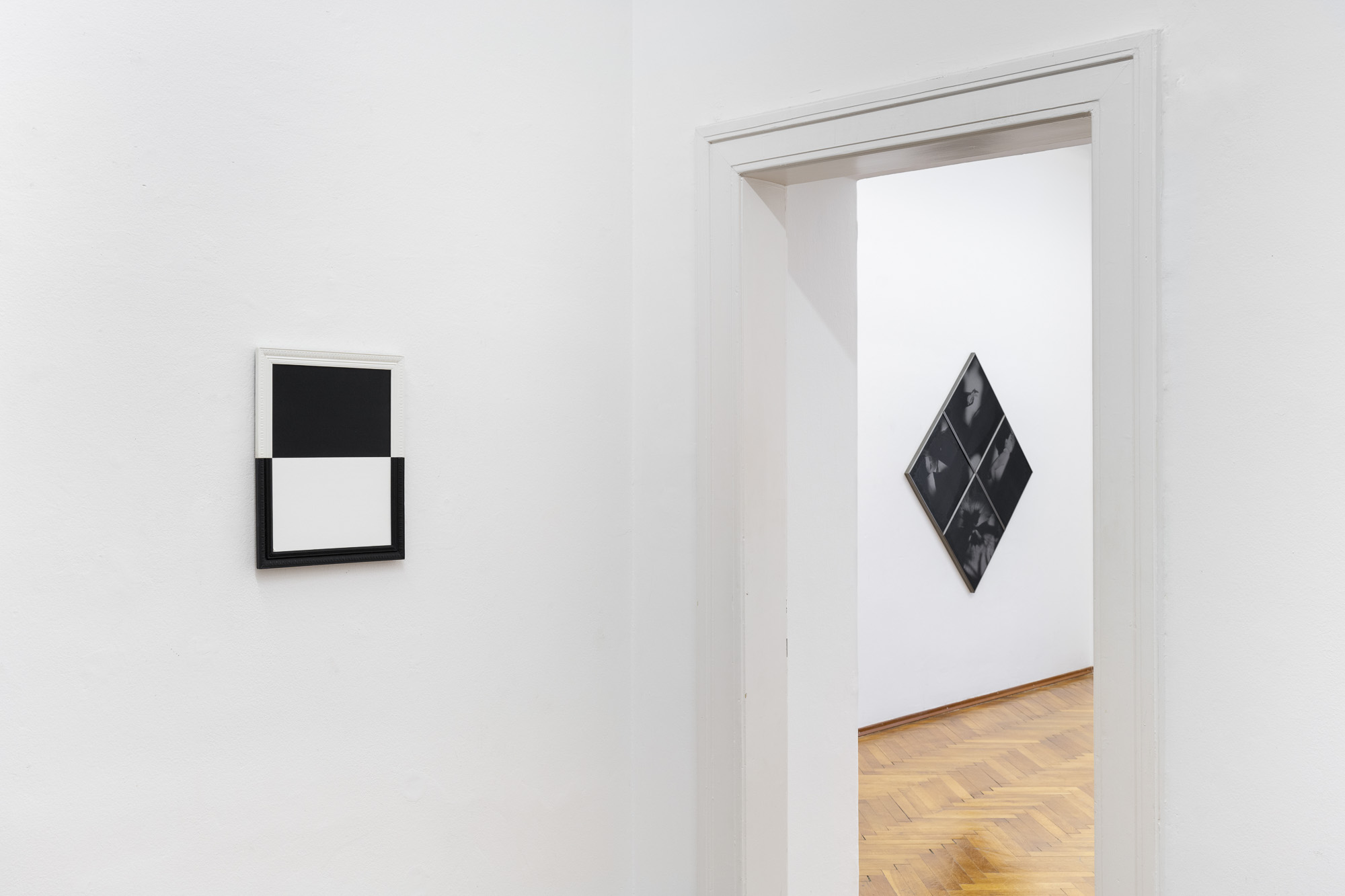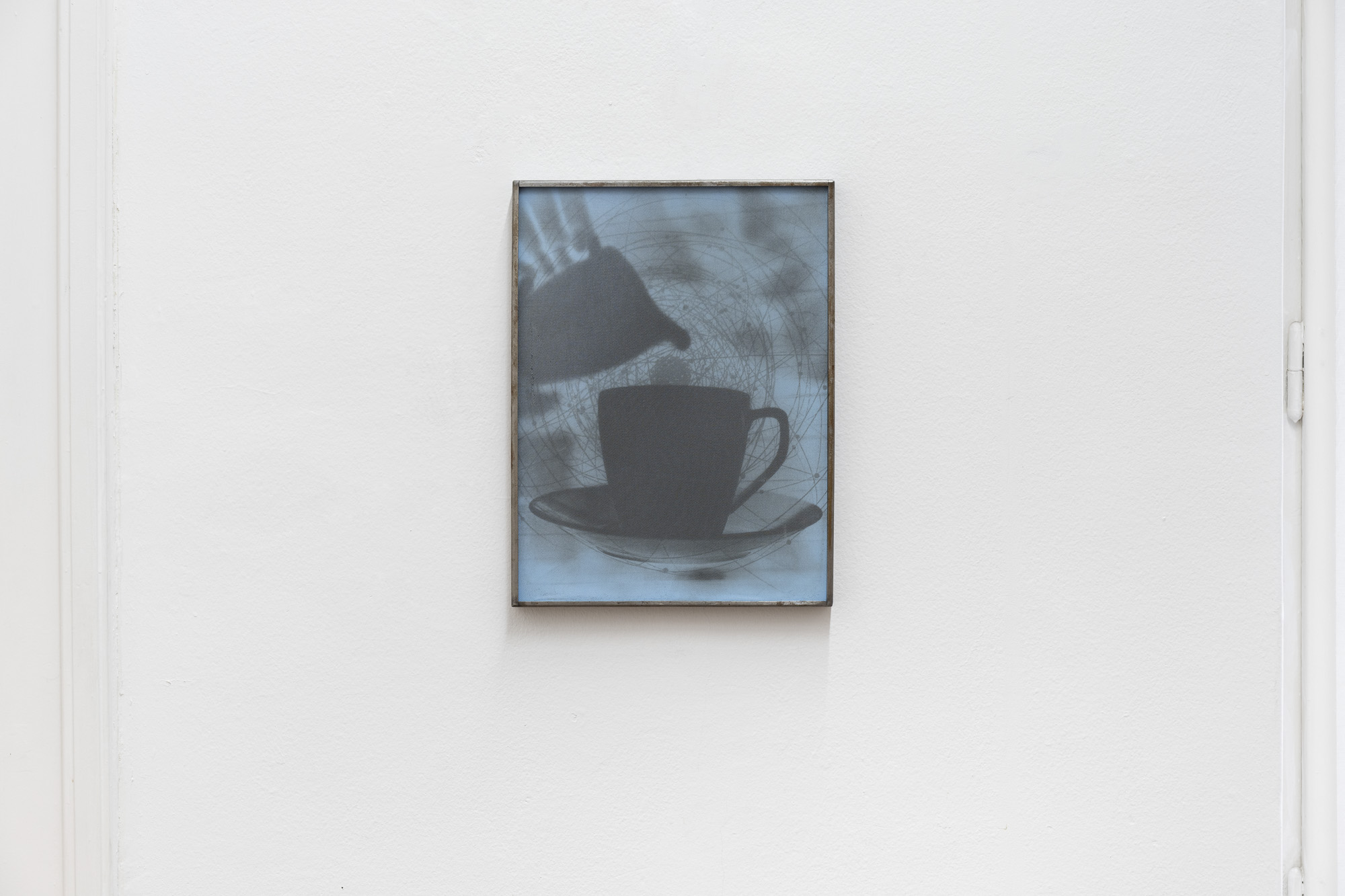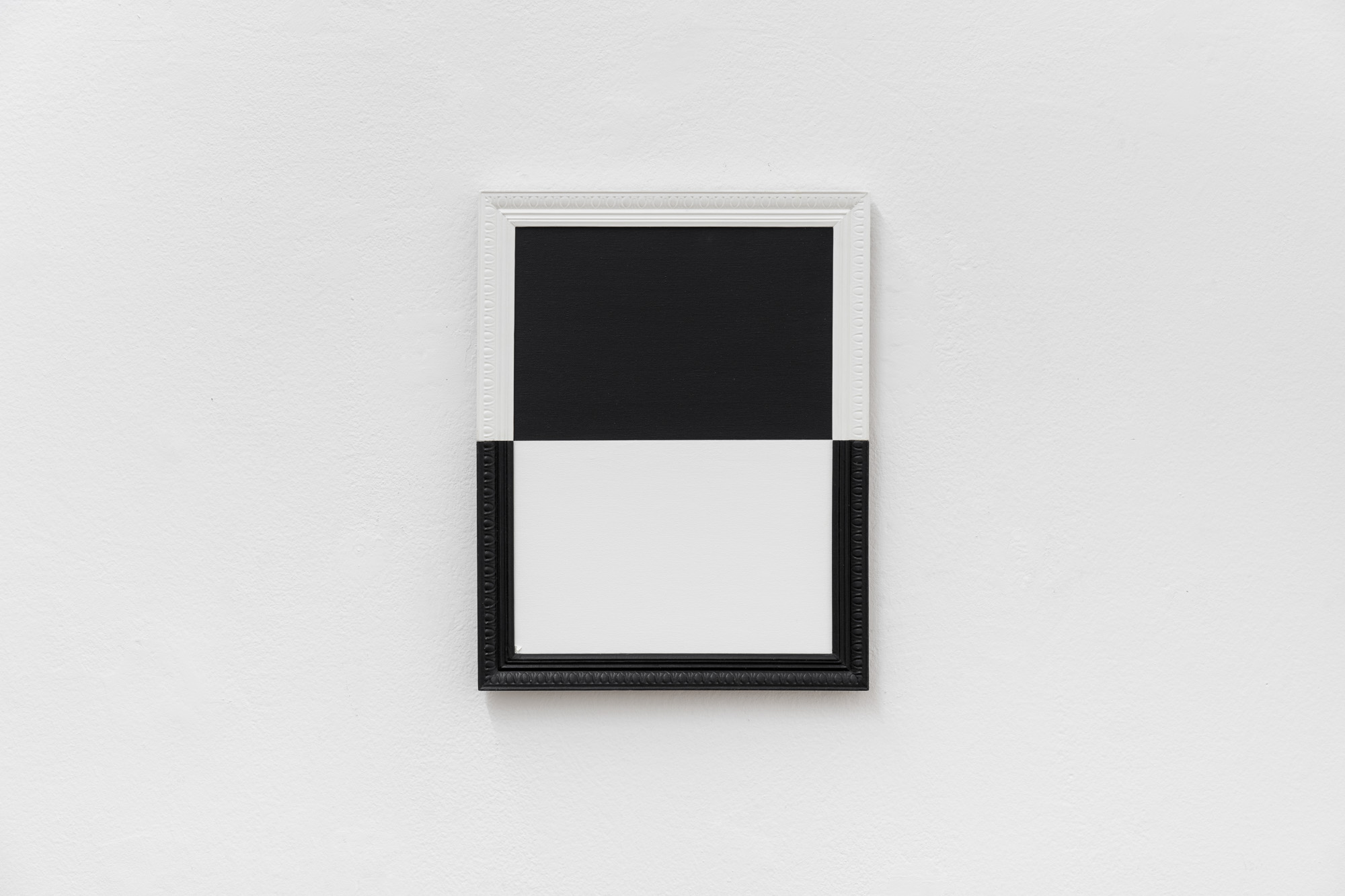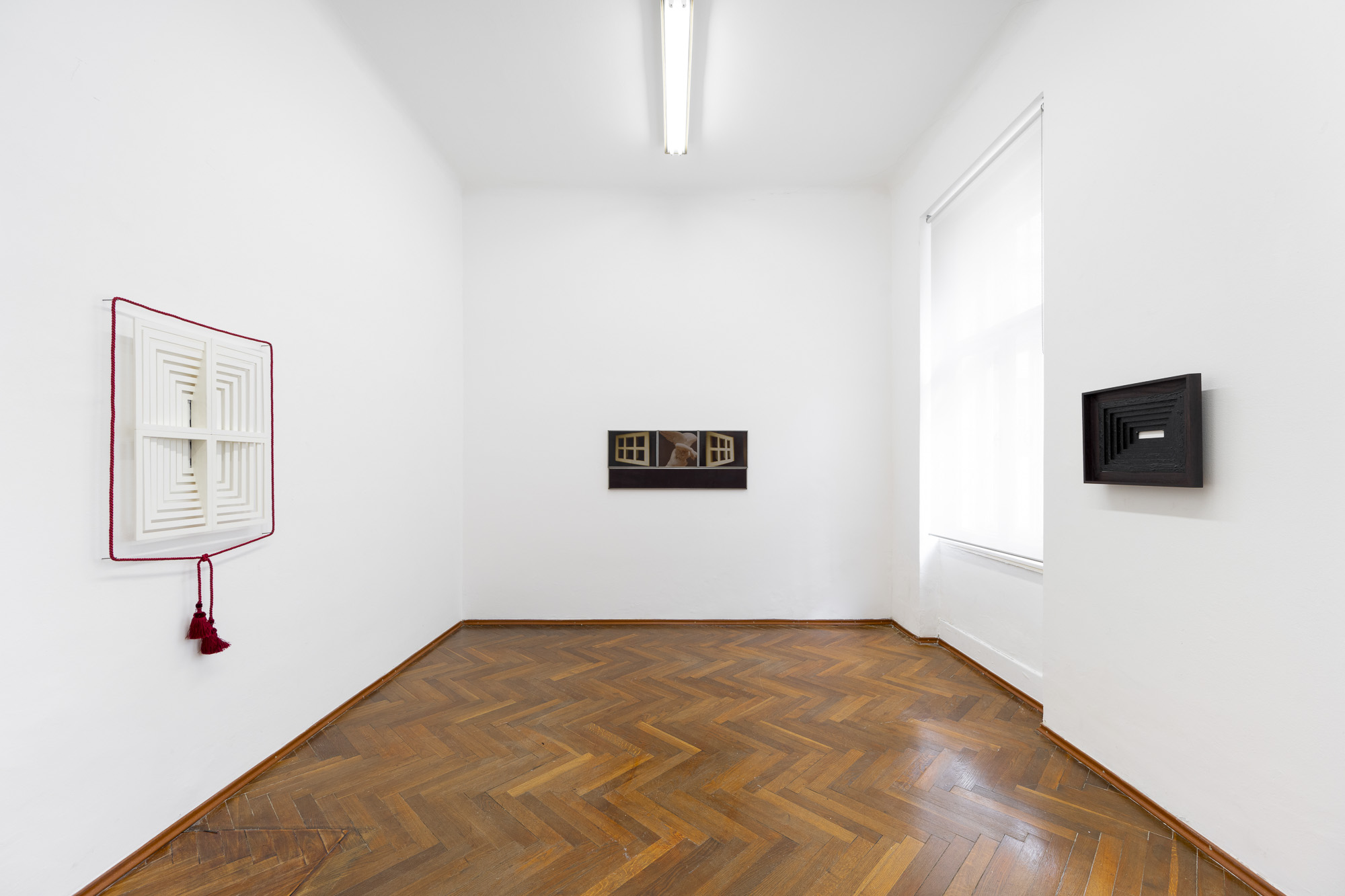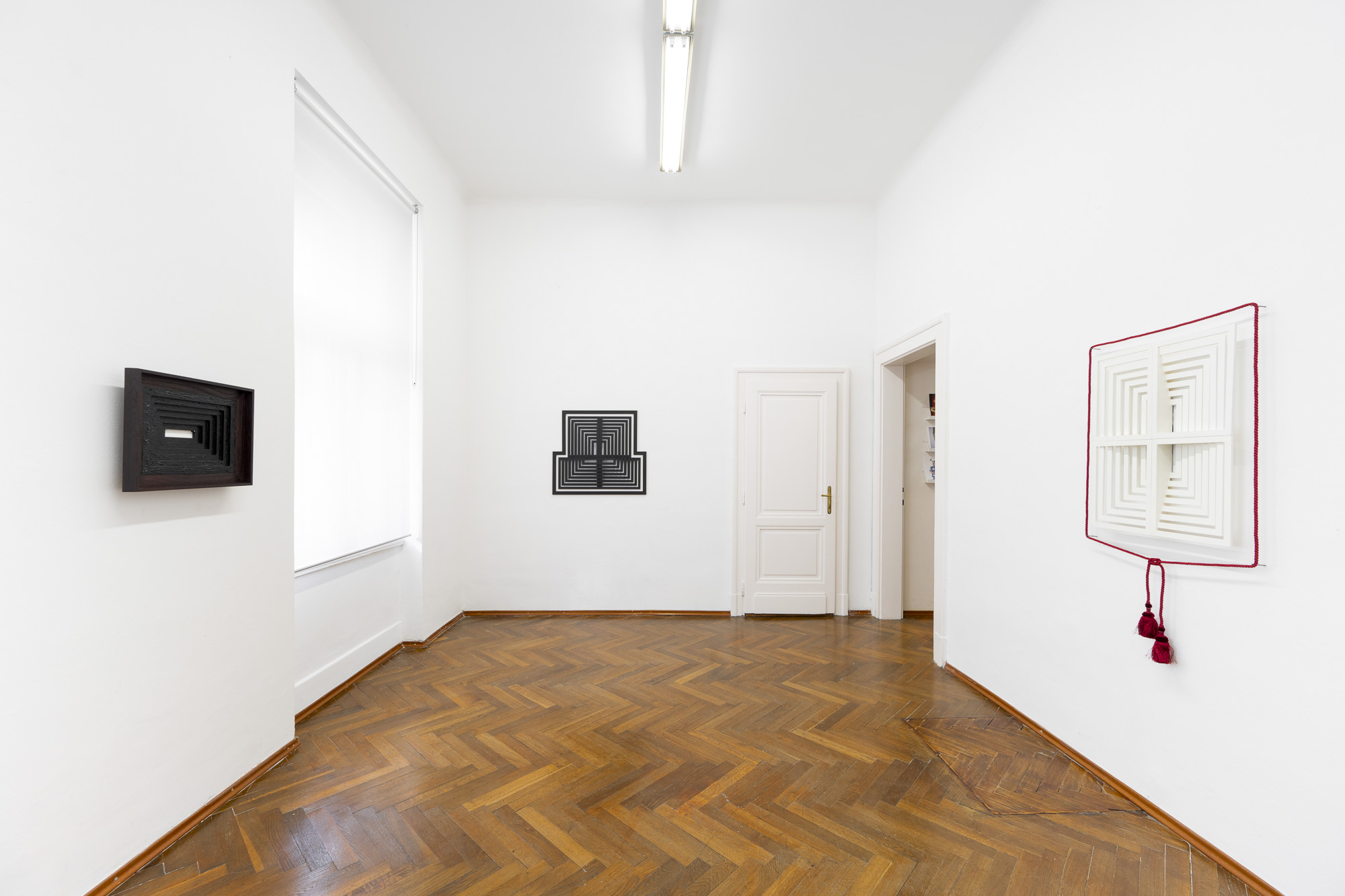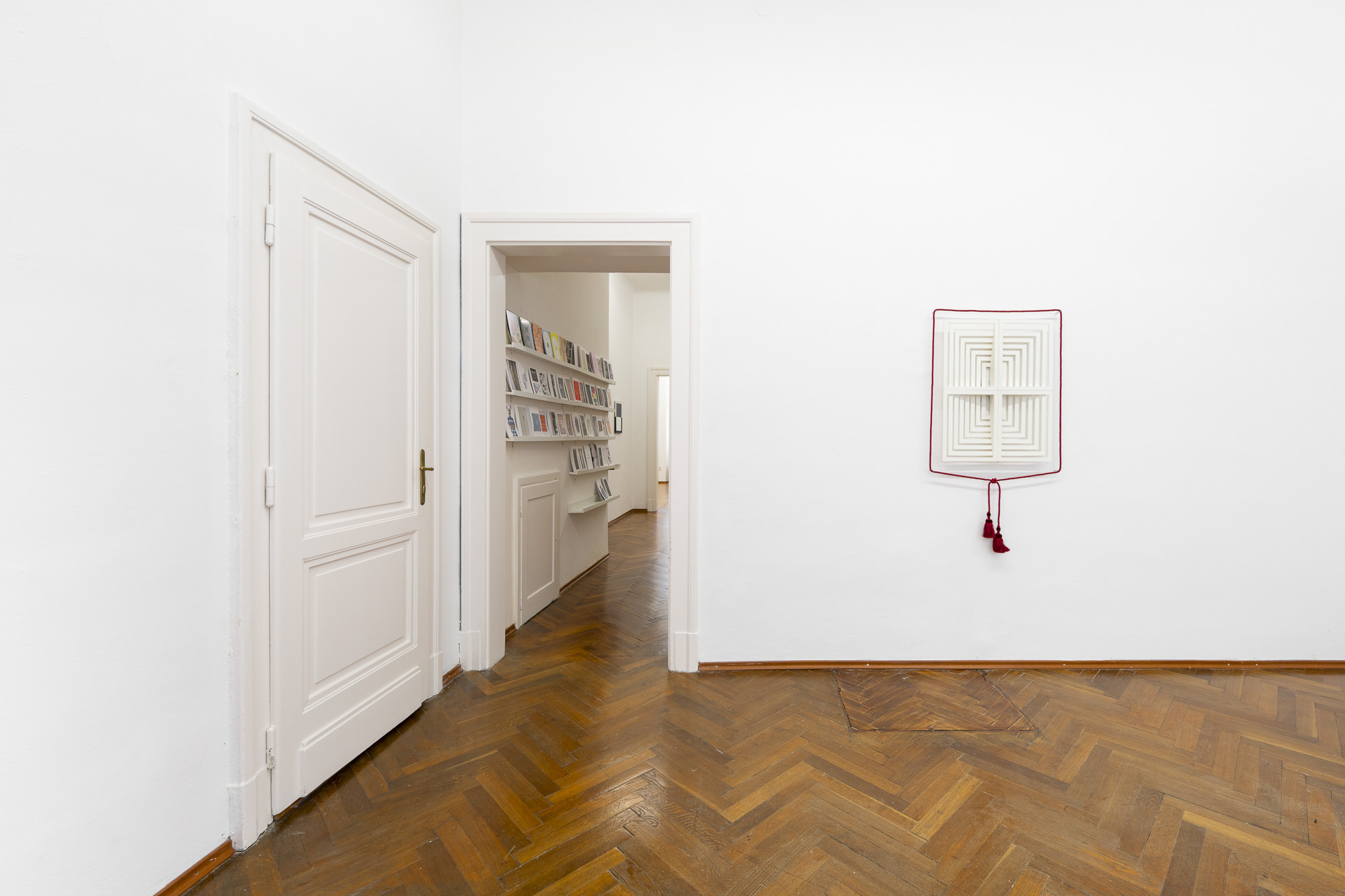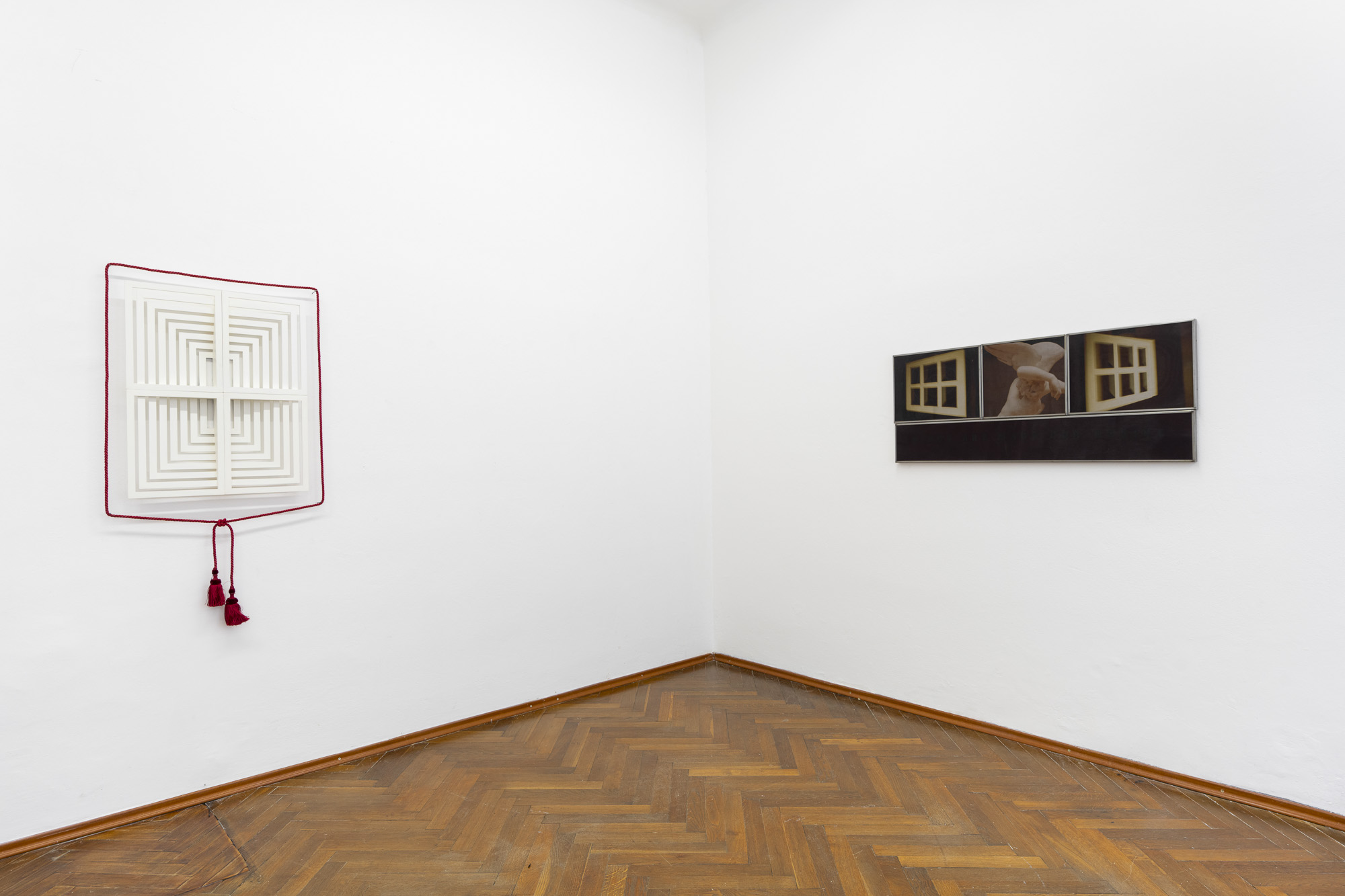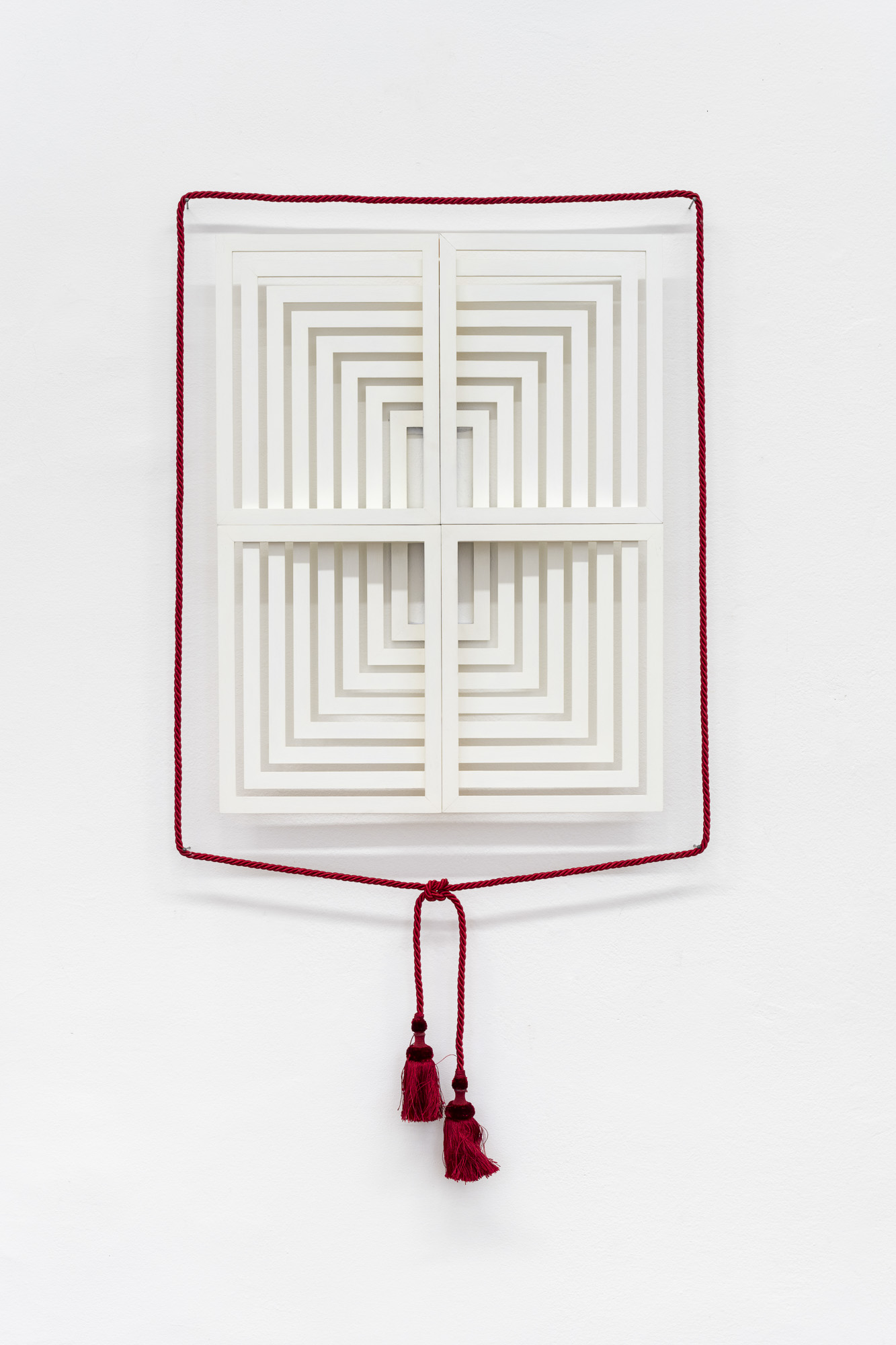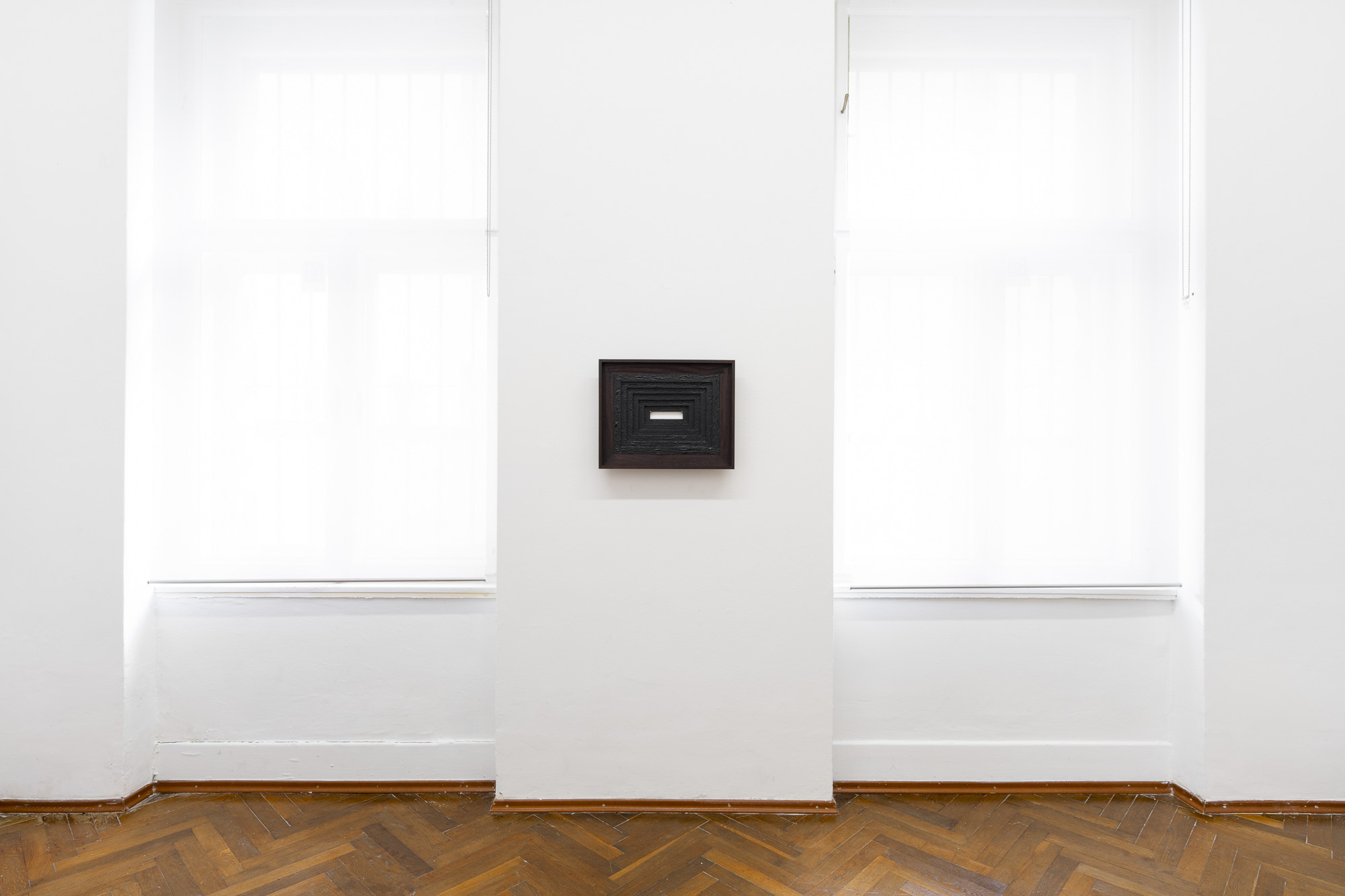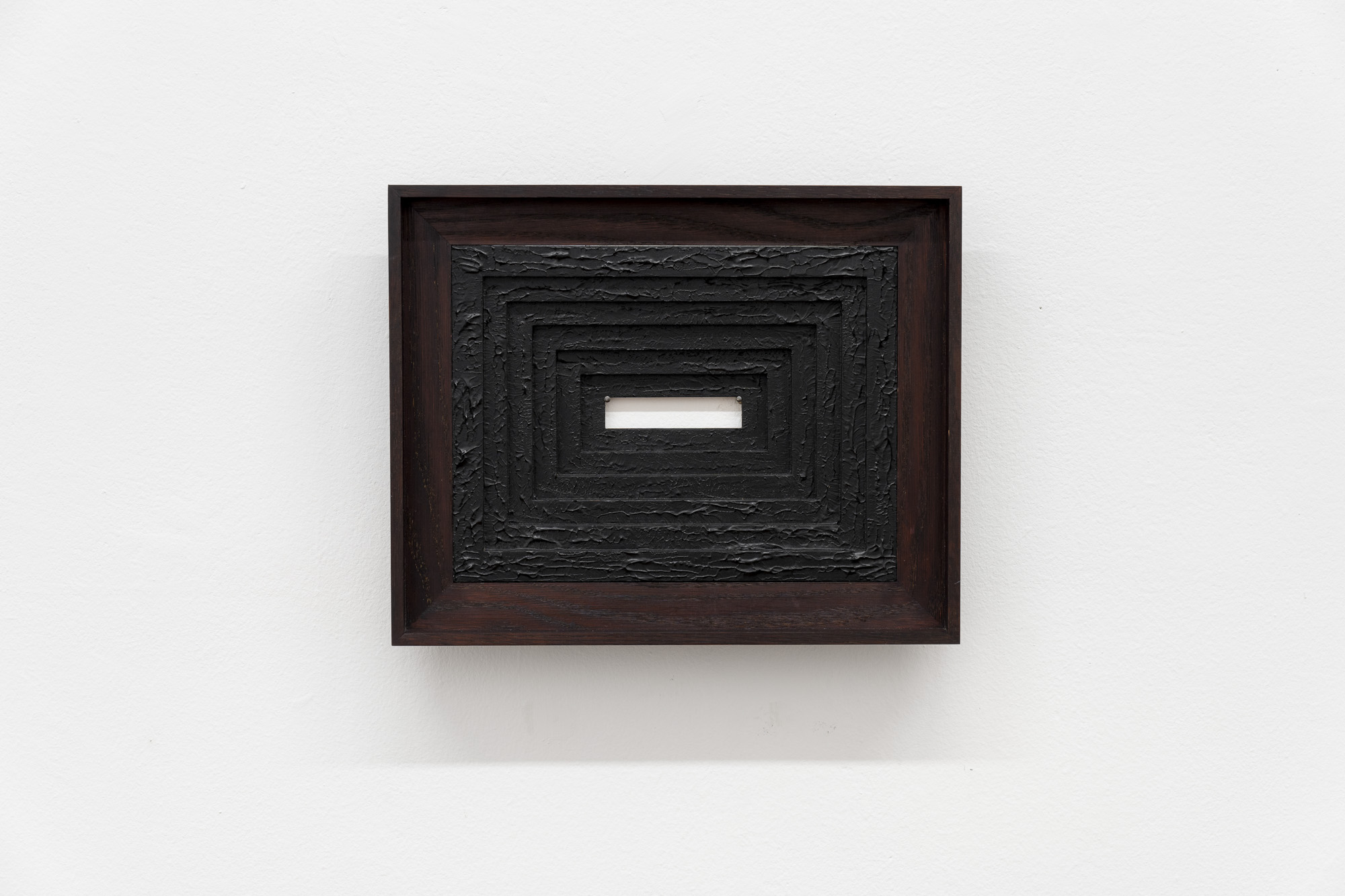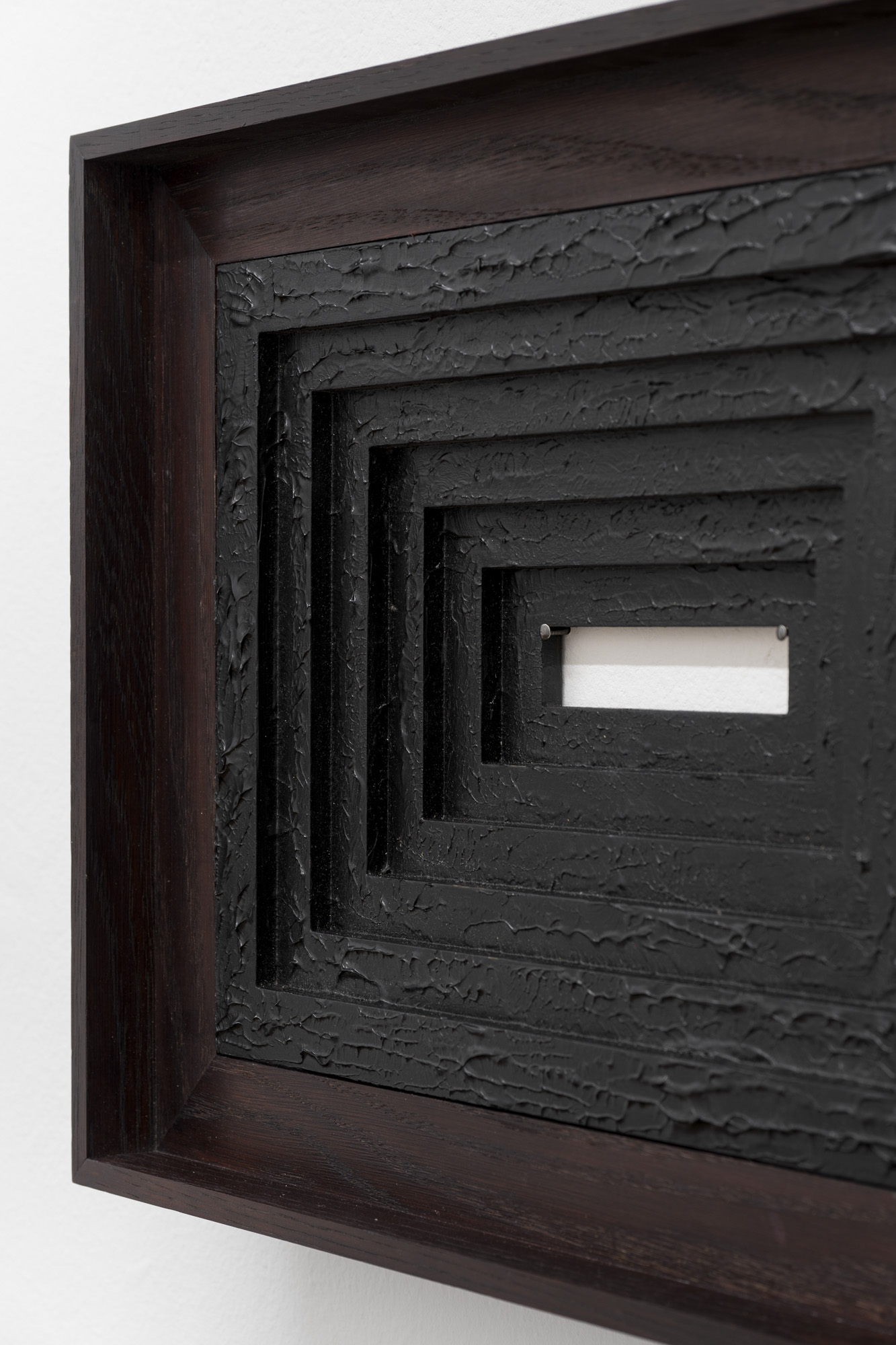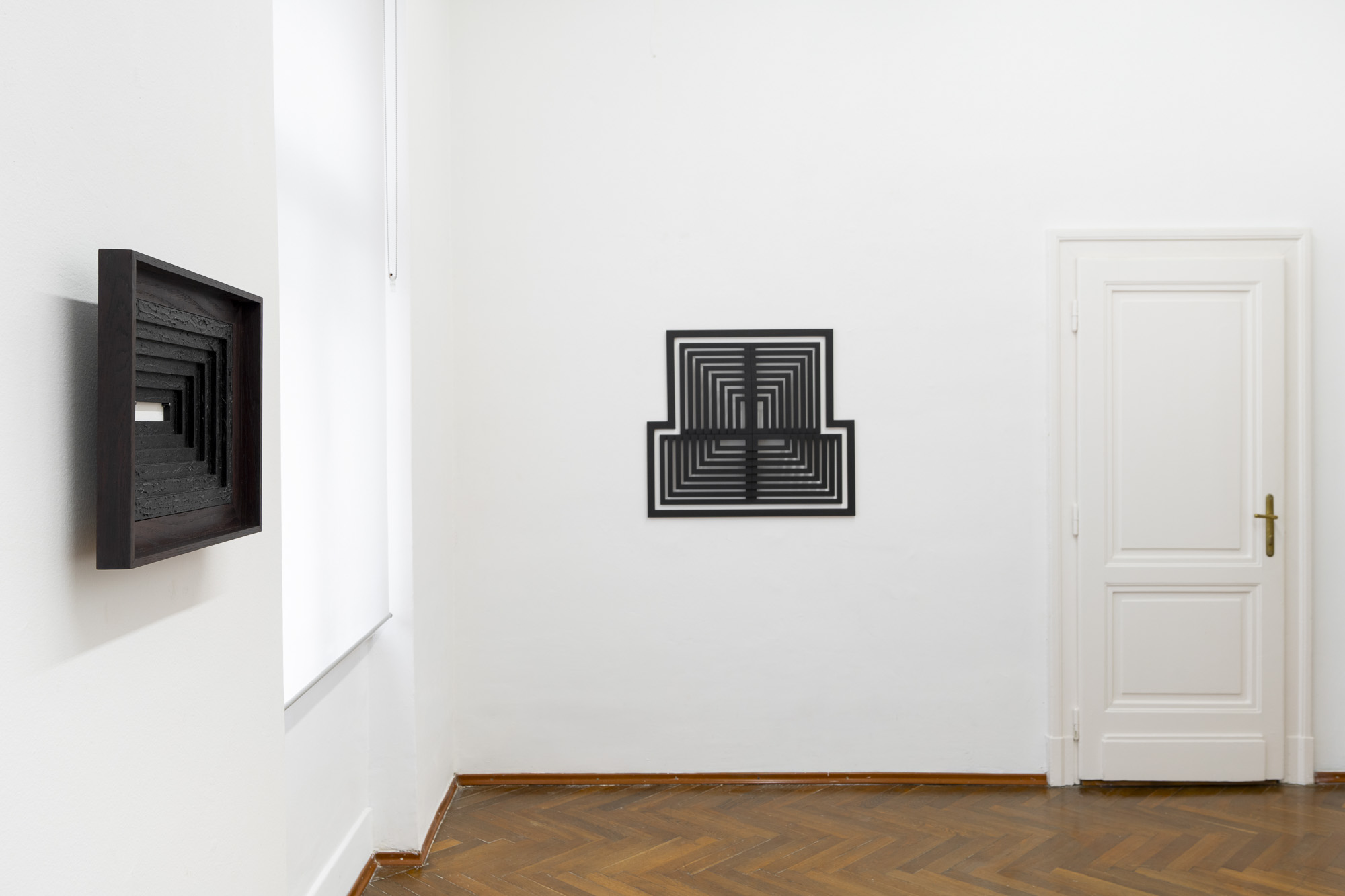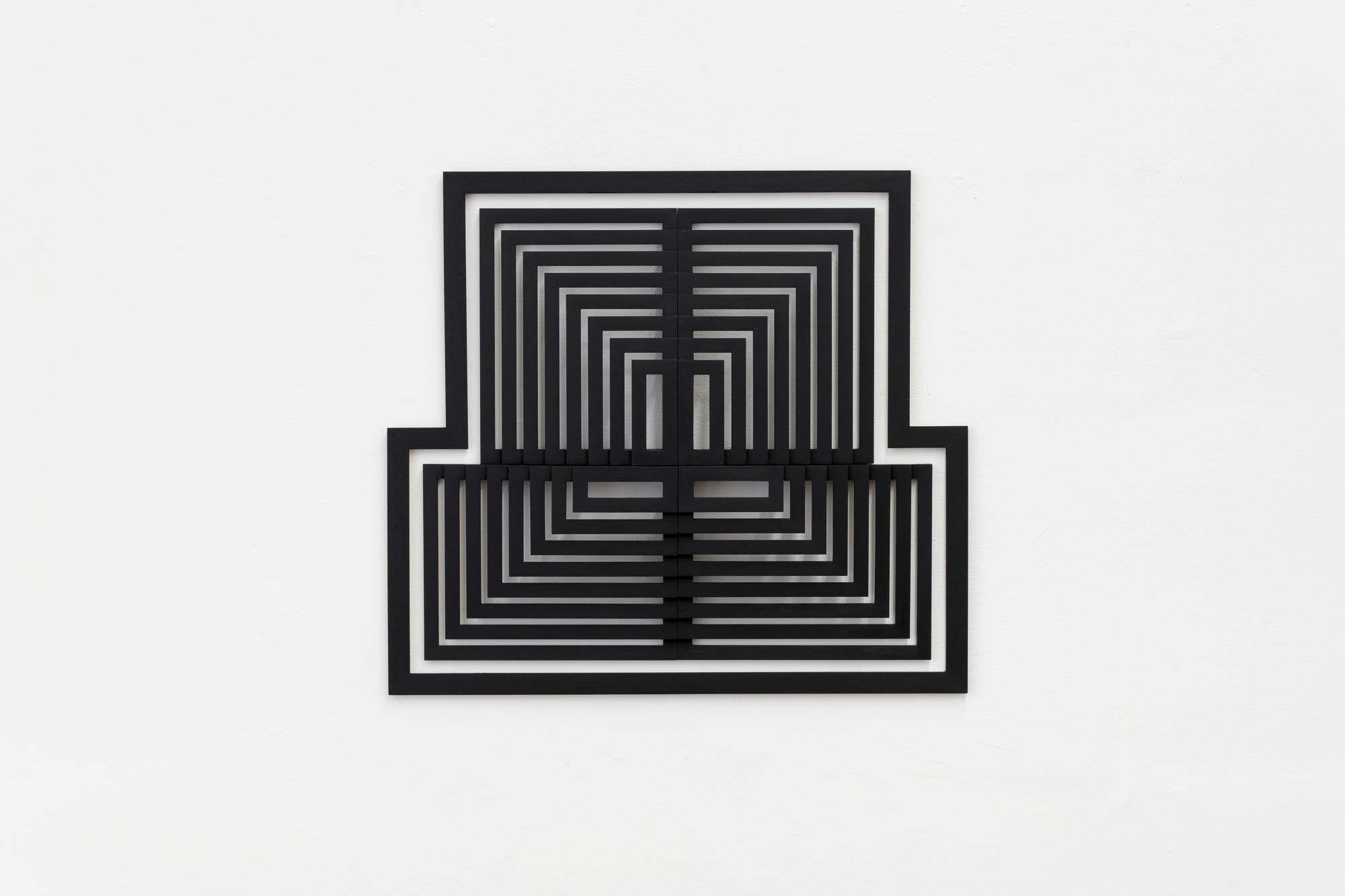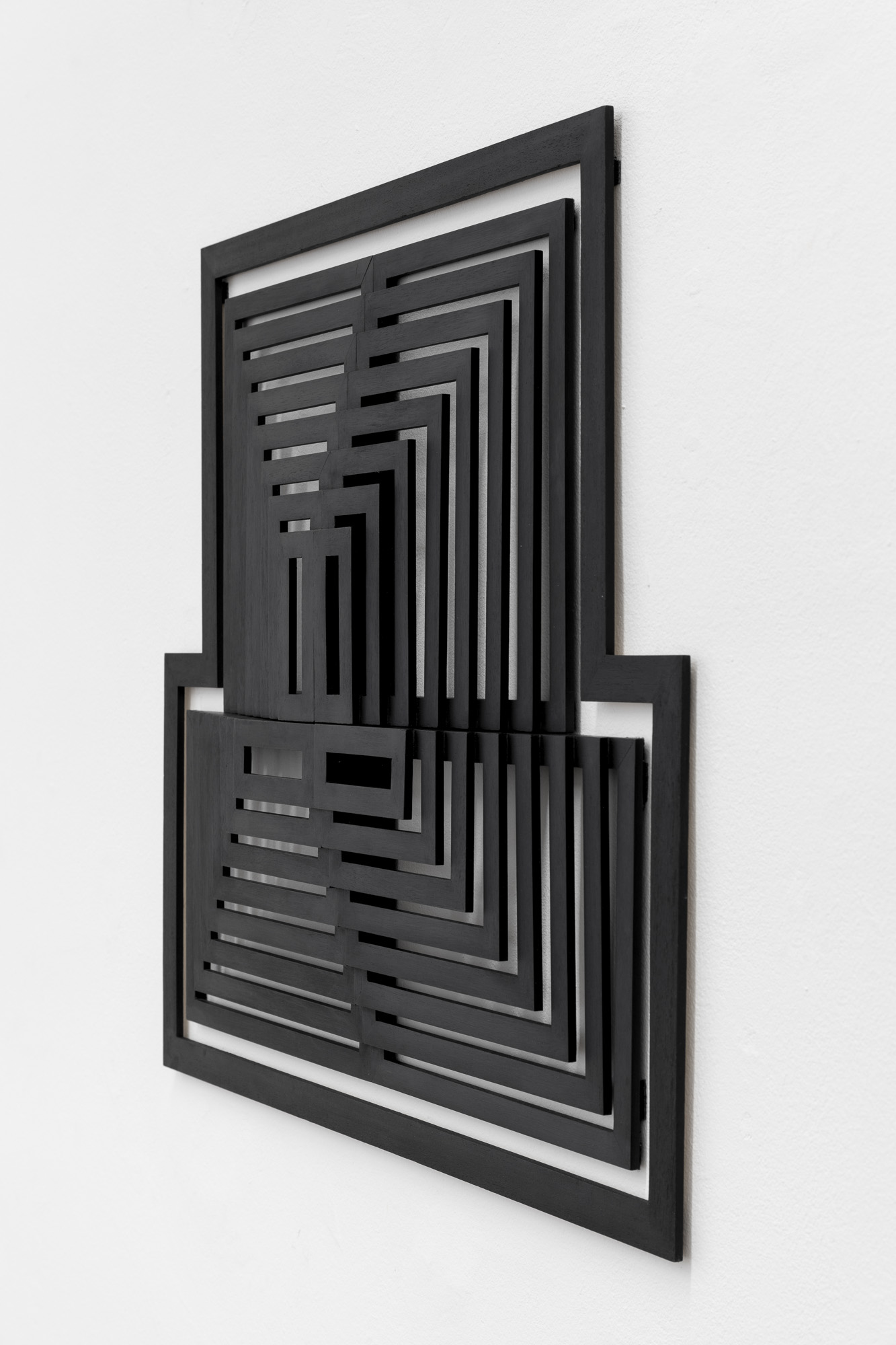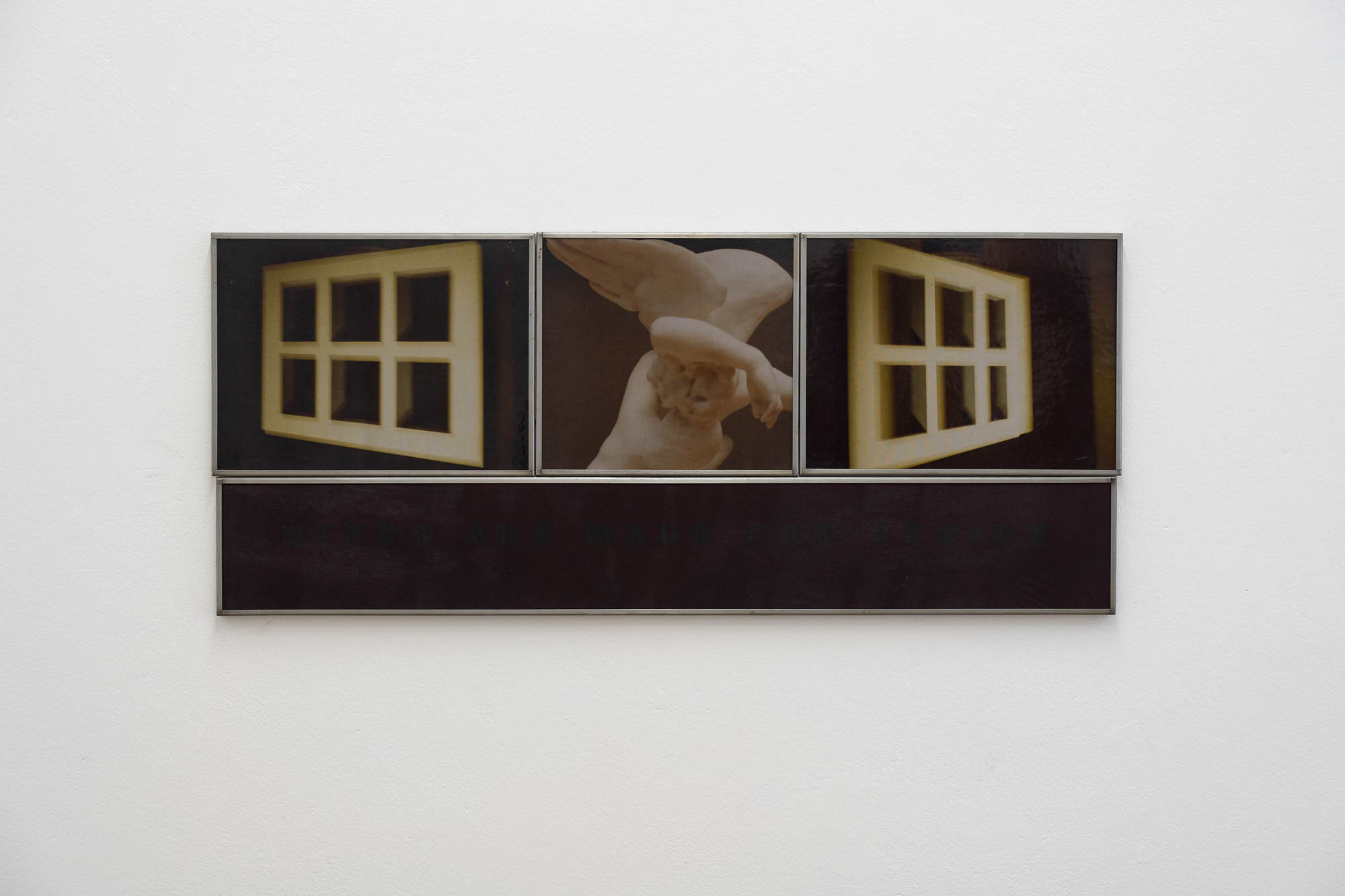Esther Ferrer | Birgit Jürgenssen
Bratislava
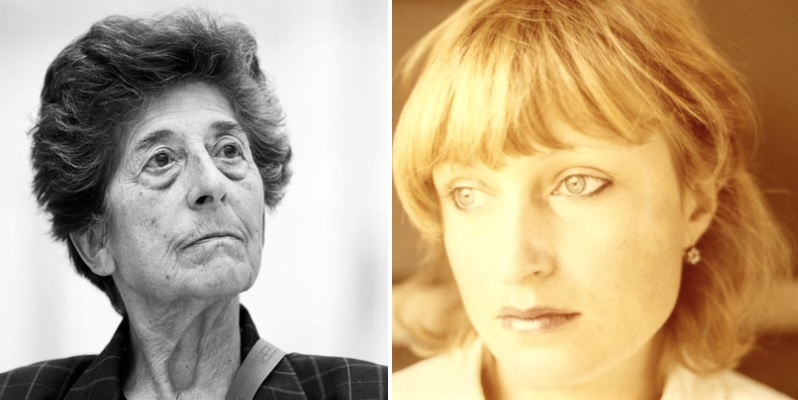
Esther Ferrer
Birgit Jürgenssen
Exhibition : 22.03 - 17.05.2024
Gandy Gallery is delighted to present a new exhibition by ESTHER FERRER (1937, Spain) in duo with Viennese artist BIRGIT JÜRGENSSEN (1949-2003 Vienna).
ESTHER FERRER
" In the frame, the frame of art " - For sale, furnished. Decoration? Camouflage operation? Plastic equivalent of "furniture music"? A nod to Satie? These white mirrors tinged with irony, these moulded cracks, these rococo corbels adorned with flowers framing a perfect geometry composed of successive frames, play on and thwart the art of the frame and... the frame of art, that of surrogate paintings, of tautological art; they offer a sense of humour in the style of Kolkoz and company. Vitruvius points out that the Caryatids bend under the architraves of the temples to remind the Carians that it is dangerous to rise up against Greece. The Van Eyck brothers pushed Adam out of the "Altarpiece of the Mystic Lamb" - his foot resting on the ledge, between real and fictional space - so that he could bear witness to an embodied history. Under Napoleon III, the frames glorified a Pompier painting or allowed it to be forgotten. Jumping from century to century, the frame fabricates meaning; to think of the frame at Fluxus is to invite people to step outside it, to break down the barriers between disciplines. John Cage, who inspired this movement, also influenced Zaj, acting like a demonic catalyst on the group and inviting them to discover sound, silence and action, while allowing events, noise and fury to occur. Art and life entered the same frame, that of the off-screen. Every ornament has a function. So, frames framing frames? framing parts of walls? or others, from which raw materials emerge: string, metal, springs, plastic? So much care has been taken with the 'packaging', perhaps to reflect the preciousness of its contents, meaning that everything that surrounds it can have a touch of magic about it.
Could this exhibition be an overplay of artifice, a way of rethinking reality and its magic? Could it be the gallery of this Republic of Genius, imbued with Dada humour and conceived from bits of string and pieces of wood.
The interpretation remains open!
Francine Flandrin, March 2009
Esther Ferrer - "Frame that frames frame, that frames frame... that frames nothing" - 1986/2008
ESTHER FERRER, San Sebastián (Spain) 1937 ESTHER FERRER is best known for her performances, which have been her principal form of artistic expression since 1965, both as a soloist and as a member of the group ZAJ, until its dissolution in 1996. Her work has always been oriented to ephemeral artistic action rather than to permanent artistic production. She created, in collaboration with the painter José Antonio Sistiaga the first "Workshop for Free Expression," in the 60s, an activity that was to inspire other similar groups in Spain.
Beginning in the 70s, she has also been quite active in the plastic arts: reworked photographs, installations, canvases and constructions based on the prime number series, Pi and so forth. Her work is a very particular kind of minimalism, which she sometimes terms "rigorous absurdity".
Esther Ferrer has performed throughout Europe (Yugoslavia, Poland, Germany, Italy, France, Switzerland, Belgium, Hungry, Holland, Denmark, Norway, Slovakia, Bulgaria, Cheek Republic, Spain etc.), as well as in Cuba, México, the United States, Mexico, Japan, Thailand and Korea, Palestine ...
The performance continue to be her principal activity, though she has done many shows in museums such as, Foundation Miro (Barcelona - Spain), Centro de Arte Reina Sofía (Madrid - Spain), Koldo Mitxelena Kulturonea (San Sebastián - Spain), Centro Andaluz de Arte Contemporáneo (Sevilla - Spain), Museo de Neufchatel (Neufchatel Suitzerland) as well as in the J. and J. Donguy Gallery, Satellite Gallery, Lilian Vincy Gallery (Paris – France) , Trayecto Gallery (Vitoria - Spain), Angels (Barcelona- Spain), Trinta (Santiago de Compostela – Sapin) , Altxerri (San Sebastián – Spain) and Visor (Valencia – Spain), ARTIUM, (Vitoria - Spain), EsBaluard (Palma de Mallorca – Spain), CGAC Centre Gallego de Arte Contemporáneo (Santiago de Compostela – Spain) MAC/VAL, Vitry-sur-Seine, FRAC Bretaghne – Rennes (France), etc.
In 1999 she was one of the two artist representing Spain in the Venice Biennale, in 2008 she recived le Spanish National prize for the Arts and in 2012 the Gure Artea Prize of Basque Government in 2013 MAV Prize (Mujeres en las Artes Visuales) and in 2014 the Price Marie Claire et the Velazquez Prize ( International prize in Spain)….
The exhibition of Esther Ferrer was kindly supported by the Embassy of Spain in Slovakia
![]()
BIRGIT JÜRGENSSEN
Birgit Jürgenssen (1949-2003 Vienna) always considered fundamental to develop her artistic expressions on multiple levels, by overlapping them, using lights and shadows, projections on the body or collages. In some of her works, for example, covering the photographs with latex or fabric, the artist creates an erotic visual and, at the same time, tactile appeal. In others, by superimposing on the surfaces of the photographs a layer of translucent gauze, Jürgenssen produces a moment of voyeurism, of illusion. In this way, the desire to move "the curtain" aside to be able to see what lays behind it permeates the observer.
Birgit Jürgenssen herself states that she wants "by being seduced, to seduce others, by covering, to make things visible", playing with illusion and
reality. Through her camouflages, Birgit transforms her photographs into paintings and into sculptural objects, to which she lends something alive, organic. Precisely through multiple superimposition levels, she manages to refine the perception of her work’s narrative.
